Expanded Animation 2020 Program

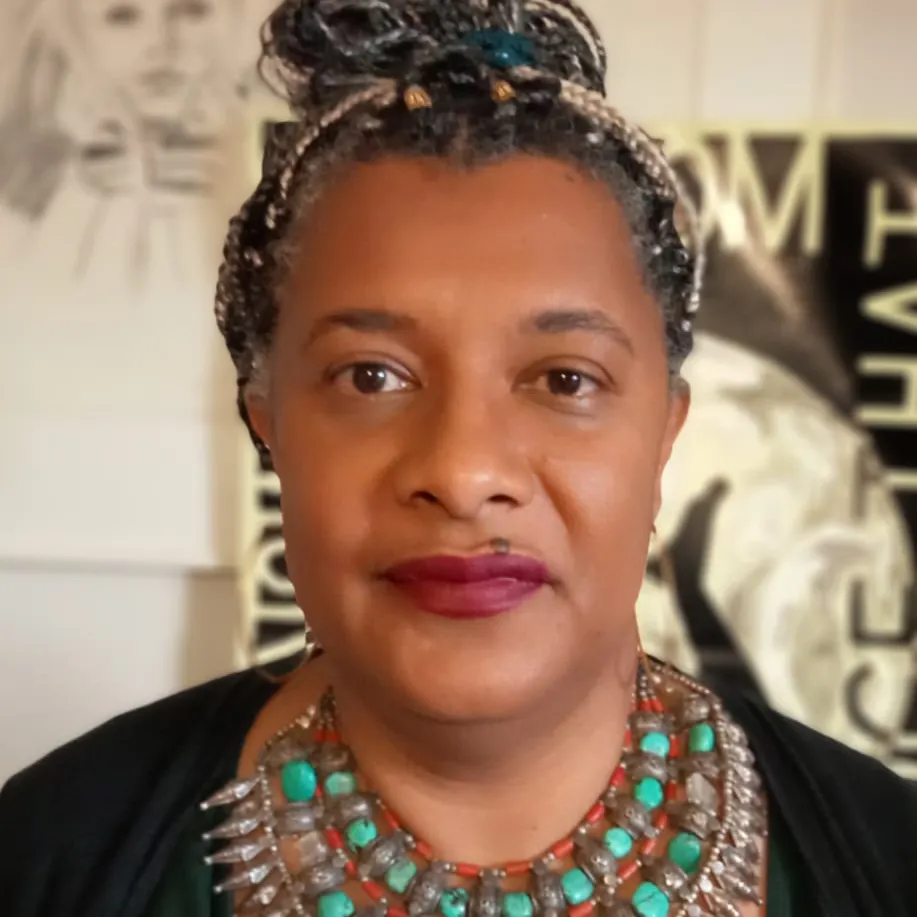
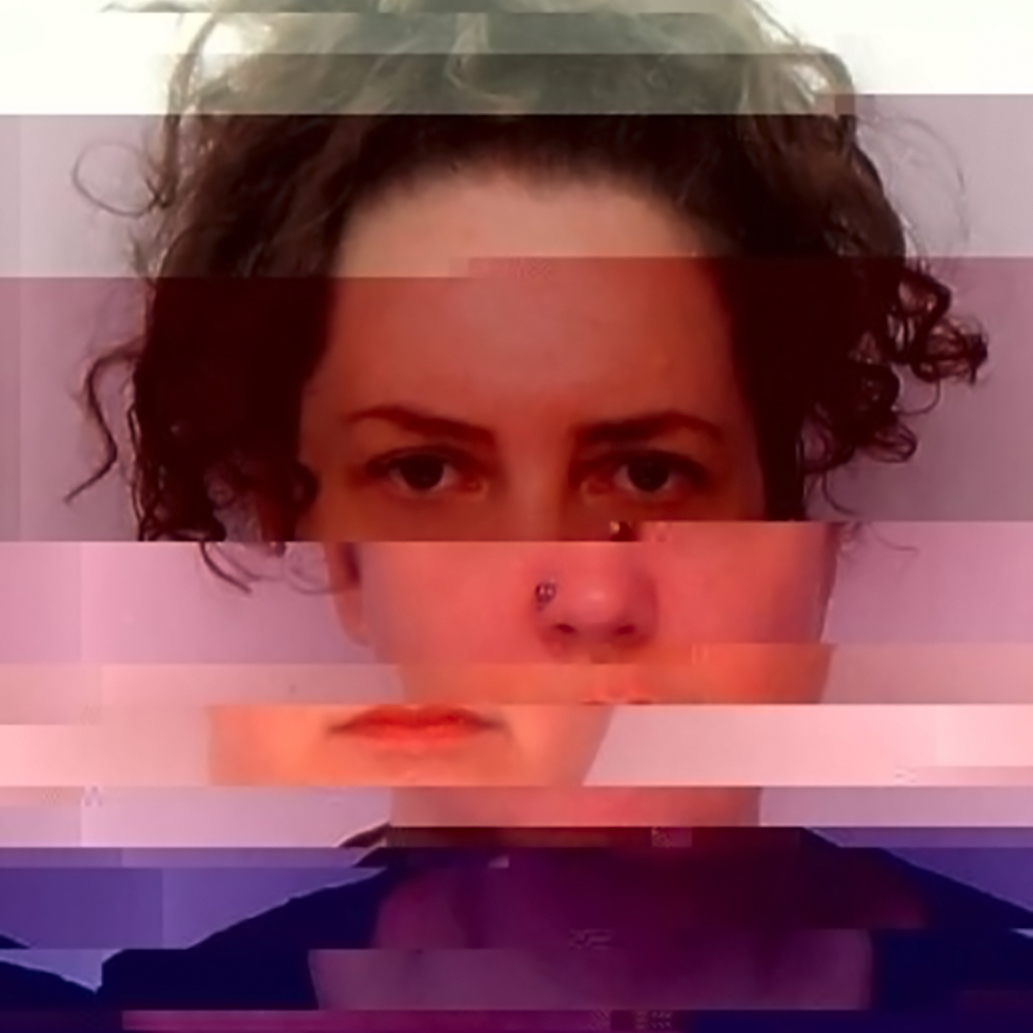

Workshop: Animation Theory and Practice
Workshop meeting of the Network «Animation and Contemporary Media Culture. Challenges and Potentials of Animation Studies in the Digital Era»
Organisation: Juergen Hagler, Maike Sarah Reinerth
Invited Guests, registration see below.
Guest Speakers: Birgitta Hosea (University for the Creative Arts, Farnham), Helen Starr (The Mechatronic Library)
What are the artistic and applied practices of animation research? In what ways can and should they inform theoretical research and vice versa? Which implicit or explicit theoretical and conceptual processes guide an animator’s practice? What kind of practical understanding do animation researchers need? The workshop addresses these (and adjacent) issues in a guest lecture by Birgitta Hosea and Helen Starr and the following open discussion.
Registration is required until Sept. 6 at m.reinerth@filmuniversitaet.de
Since 2020, the network «Animation and Contemporary Media Culture. Challenges and Potentials of Animation Studies in the Digital Era» establishes professional exchange between early career researchers and internationally renowned experts in the emerging field of animation studies. Network members aim at the systematic profiling and internationalization of animation research from German-speaking countries and promotes strategic measures for the development and intensification of animation studies in the German-speaking world. The work is funded by DFG, Deutsche Forschungsgemeinschaft (German Research Foundation).
2.5 h
project space, Ars Electronica Center (4th floor)
Invited guests
Maike Sarah Reinerth
Helen Starr
Helen Starr (TT/UK) is a Afro-Carib curator, producer and cultural activist from Trinidad, WI. She began curating exhibitions with artists such as Susan Hillier, Cindy Sherman and Marcel Duchamp in 1995. Helen founded The Mechatronic Library in 2010, to give marginalised artists access to technologies such as Game Engines, Virtual Reality (VR), Augmented Reality (AR). […]
http://www.themechatroniclibrary.com/Birgitta Hosea
Birgitta Hosea (SE/UK) is an artist, filmmaker, and researcher in expanded animation. Exhibitions include Venice & Karachi Biennales; Oaxaca & Chengdu Museums of Contemporary Art; InspiralLondon; Hanmi Gallery, Seoul. She has a solo exhibition at ASIFAKeil, Vienna in April 2020. Included in the Tate Britain and Centre d’Arte Contemporain, Paris, archives, she has been awarded […]
http://www.birgittahosea.co.uk/Juergen Hagler
Juergen Hagler (AT) studied art education, experimental visual design, and cultural studies at the University for Art and Design in Linz, Austria. He currently works as a professor of Computer Animation and Animation Studies in the Digital Media department at the Hagenberg Campus of the University of Applied Sciences Upper Austria. Since 2014 he a […]
https://research.fh-ooe.at/de/staff/215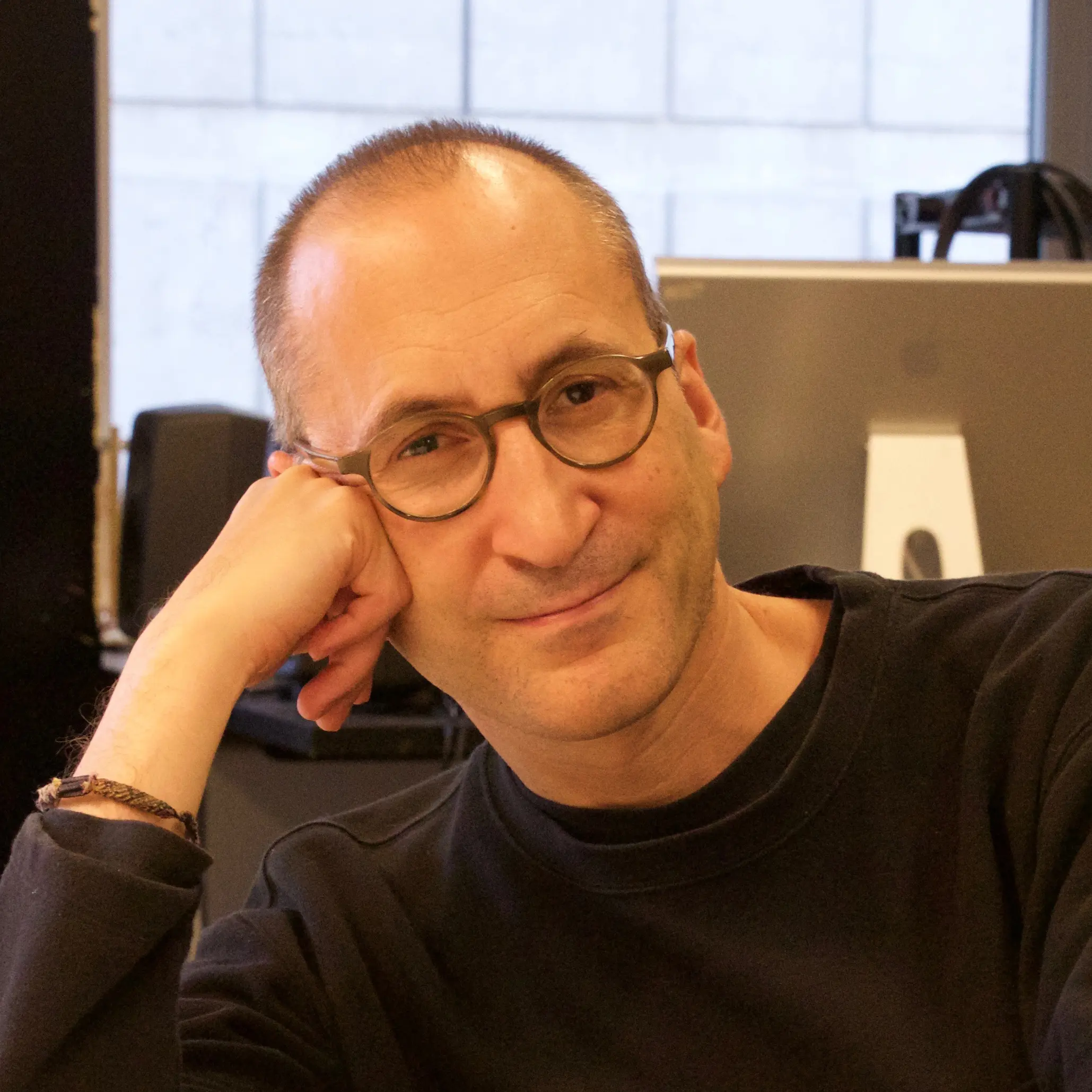
Art & Industry – Christopher Salter: XR Futures: Co-Presence, Co-Extensive Space and Bodily Experience
The recent and dramatic acceleration of technical research, technological promises, and corporate and public imaginaries in VR has led Silicon Valley executives, computer scientists, and the media to claim that the emerging “metaverse” will change human interaction as we know it” (Nardella 2019). At the same time, the emergence of a new set of wearable and half-transparent AR (e.g., Microsoft Holo-Lens or Magic Leap) devices together with VR headsets that use a video technology called “passthrough,” are radically configuring not only the experience of the user’s presence “between the digitality of VR and the concrete reality of their surroundings” (Saker and Frith 2020) but also embodied understandings of co-presence (Goffman 1959), “the conditions in which human individuals interact with one another face to face from body to body” (Zhao 2003). Yet, the phenomenological experience of co-present, co-located (in the same physical space) sensory interaction in relationship with others in new VR/AR environments remains understudied. Indeed, “presence” in XR contexts has been long accepted as the sense of “being there” (Riva et al., 2003), “telepresence” (Minsky 1980), or what has been called the “place illusion:” the experience of being in a place (even though the real place one is in is usually irrelevant to the virtual experience) “in spite of the sure knowledge that you are not there” (Slater 2009). While there is a vast literature on such virtual presence, its focus is on “the degree to which a virtual environment submerges the perceptual system of the user” away from the “real world” (Biocca and Delaney 1995). Furthermore, studies of co-present interaction in VR/AR have overwhelmingly focused on purely virtual environments with avatars and virtual humans (Wang 2011; Freiwald et al. 2021; Shin and Dongsik 2019), virtual agents (Strojny et al., 2020) and video conferencing (Kim et al., 2014). In other words, the vast majority of research into presence and immersion in VR “has only a limited involvement in concrete space” (Saker and Frith 2020). Using a recent XR-based theatre project called Animate which is focused on climate transformation as a case study, this presentation aims to present concepts and methods for grappling with what Ronald Azuma claims is the fundamental challenge as we move into increasingly mixed reality-based experiences where animation is indeed extended between the physical and computational worlds: “how to enable virtual content that is integrated with the surrounding real world, while users remain engaged with and aware of that ‘real world’” (2016).
40 min
Christopher Salter
Chris Salter (US/CH) is a Professor for Immersive Arts and Director of the Immersive Arts Space at the Zurich University of the Arts (ZHdK). He is also Professor Emeritus, Design and Computation Arts at Concordia University in Montreal and former Co-Director of the Hexagram network for research-creation in arts, cultures and technology, and Co-Founder of […]
https://www.chrissalter.com/
Art & Industry – Immerea: Interdisciplinary Approaches in the Creative Industries
As XR developers and media artists, our work is strongly defined by interdisciplinary approaches and collaborations, driven by the interest in extending artistic-speculative concepts and spatial perception through interactive media. At Immerea, we are passionate about pushing the boundaries of immersive and interactive technologies, offering new perspectives on perception and interaction in VR games with high artistic quality. As media artists, we thrive on exploring the intersection of experimental animation, interactive installations and hybrid performances, between physical and digital realms. This talk focuses at the convergence of these two practices, where interdisciplinary approaches unlock new possibilities for both personal artistic expression as well as for the creative industries.
40 min
Flavia Mazzanti & Manuel Bonell
Flavia Mazzanti (IT/BR/AT) is a Vienna-based artist, architect and entrepreneur in the field of virtual reality and digital media. She is co-founder of Immerea – a media company focusing on the development of VR Games and interactive Installations –, co-organizer of XRVienna, and active as public speaker and university lecturer. Coming from a background in […]
https://www.immerea.com/
Art & Industry – Vladimír Kudělka: Searching for Parallel Worlds in Game Development
The sci-fi computer game, Afterglitch, was launched in 2022, after a rigorous seven-year development journey. Originally, it was envisioned as an astronaut's straightforward quest to contact an alien civilization. However, the quest evolved, adding layers of complexity as it navigated towards uncharted territories – new dimensions and parallel worlds. The game's development philosophy departed from traditional norms, transcending typical constraints of time, space, and rationality. It increasingly prioritized experiential immersion over descriptive clarity. A unique feeling, a sensation that players could lose themselves in, was at the heart of the gaming experience. Afterglitch was not just about understanding the universe; it was about living it. Thus, in the boundary-pushing world of Afterglitch, the divide between a computer game and a spiritual experience becomes blurred. Does it end at the crossroads of digital entertainment and spiritual awakening?
40 min
Vladimír Kudělka
Vladimír Kudělka (CZ) is a visual artist and computer game creator. He is a two-time finalist of the IGF Awards (Excellence in Visual Art and Nuovo Award), presented in San Francisco at the Independent Games Festival, and a recipient of the Czech Game of the Year award in the category of Artistic Contribution to Czech […]
https://hangonit.com/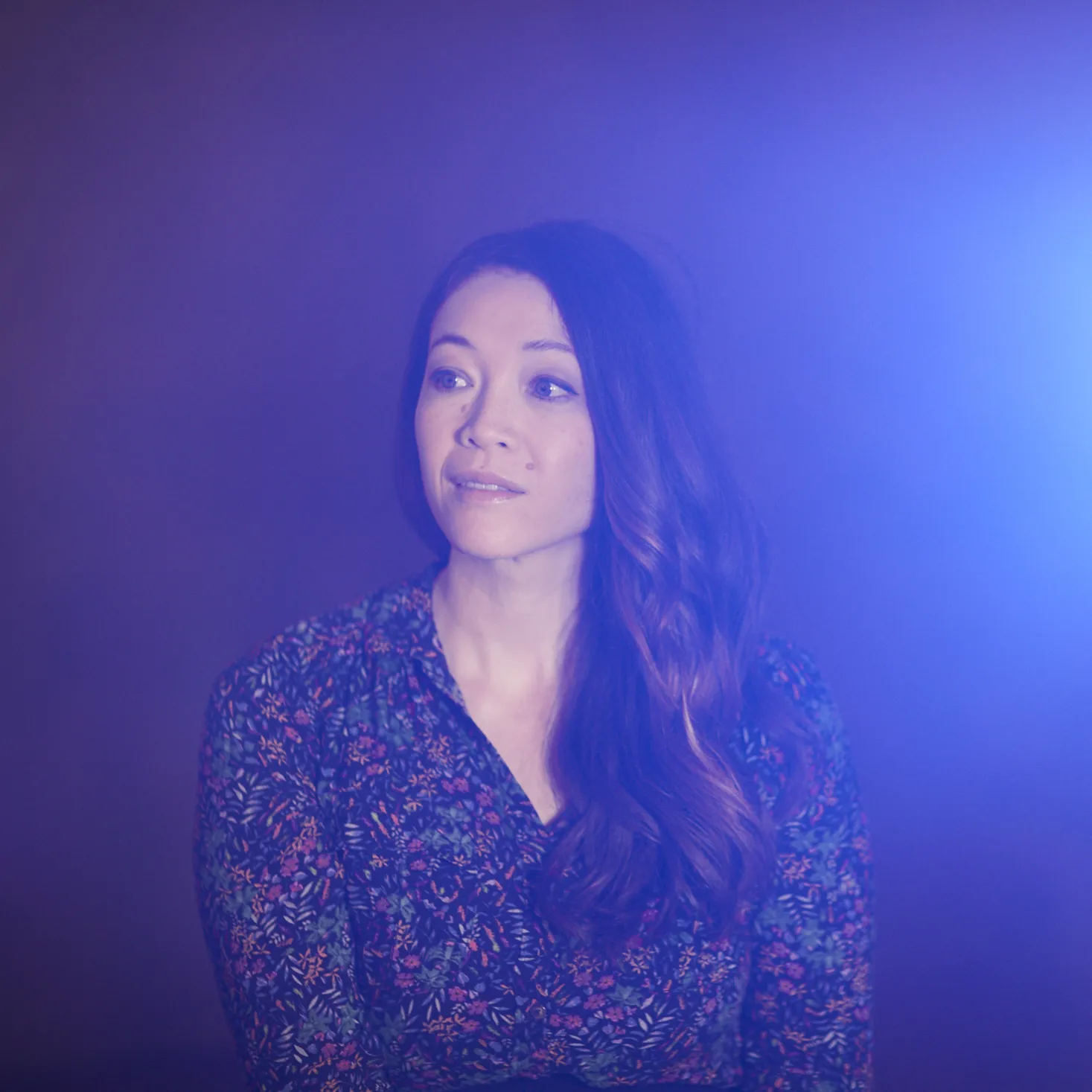
Deep Space 8k – Animation Festival: Miwa Matreyek
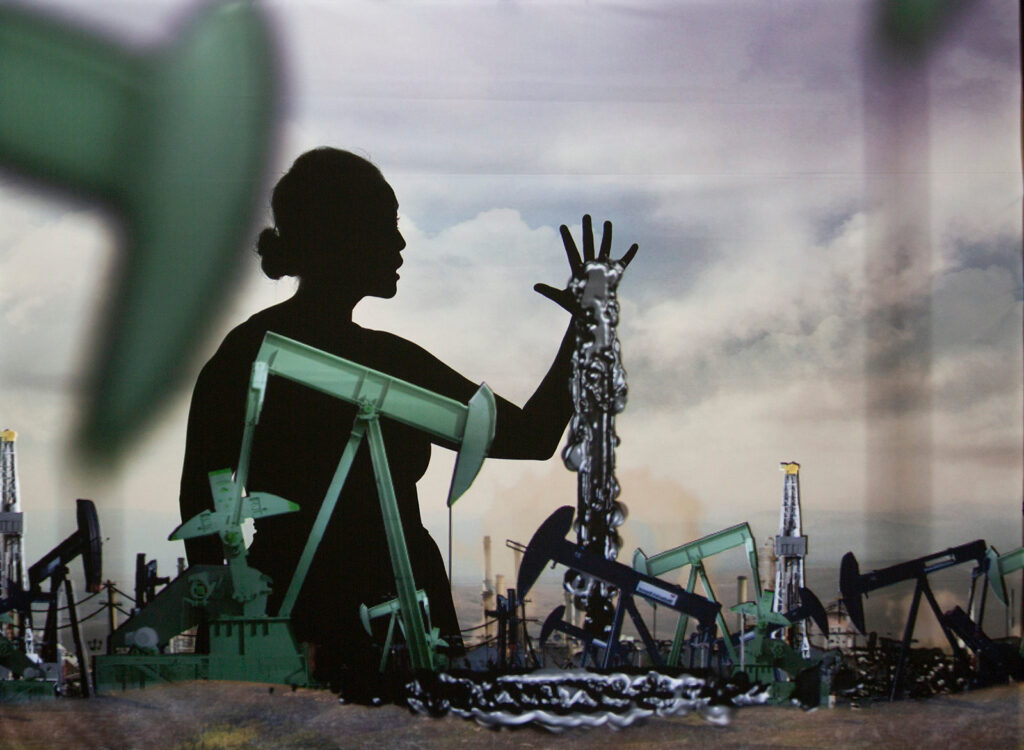 Miwa Matreyek (Golden Nica Winner 2020) will be presenting a shortened documentation video of her 2020 performance work, *Infinitely Yours*. She creates live performances integrating her kaleidoscopic animations with her body in shadow from behind the screen. With *Infinitely Yours*, Matreyek takes moments from news articles about the climate crisis and performs them as first-hand experiences happening upon her body, such as wildfires, flooding, extractions of resources, and pollution. The shadow figure cowers, flees, and drowns – but also protects, discovers, and feels hope. The phantasmagorical experience centers around creating a visceral experience of shared climate grief between the creator-performer and the audience.
Miwa Matreyek (Golden Nica Winner 2020) will be presenting a shortened documentation video of her 2020 performance work, *Infinitely Yours*. She creates live performances integrating her kaleidoscopic animations with her body in shadow from behind the screen. With *Infinitely Yours*, Matreyek takes moments from news articles about the climate crisis and performs them as first-hand experiences happening upon her body, such as wildfires, flooding, extractions of resources, and pollution. The shadow figure cowers, flees, and drowns – but also protects, discovers, and feels hope. The phantasmagorical experience centers around creating a visceral experience of shared climate grief between the creator-performer and the audience.
30 min
Ars Electronica Center, Deep Space 8K
Miwa Matreyek
Miwa Matreyek (US/CA) is an animator, designer, and performer originally based in Los Angeles, now based on the unceded traditional territories of the Coast Salish peoples of the xʷməθkwəy̓əm (Musqueam), Skwxwú7mesh (Squamish), and Səl̓ílwətaɬ (Tsleil-Waututh) Nations, also known as Vancouver BC. She has been an internationally touring artist since 2010. Coming from a background in […]
https://www.miwamatreyek.com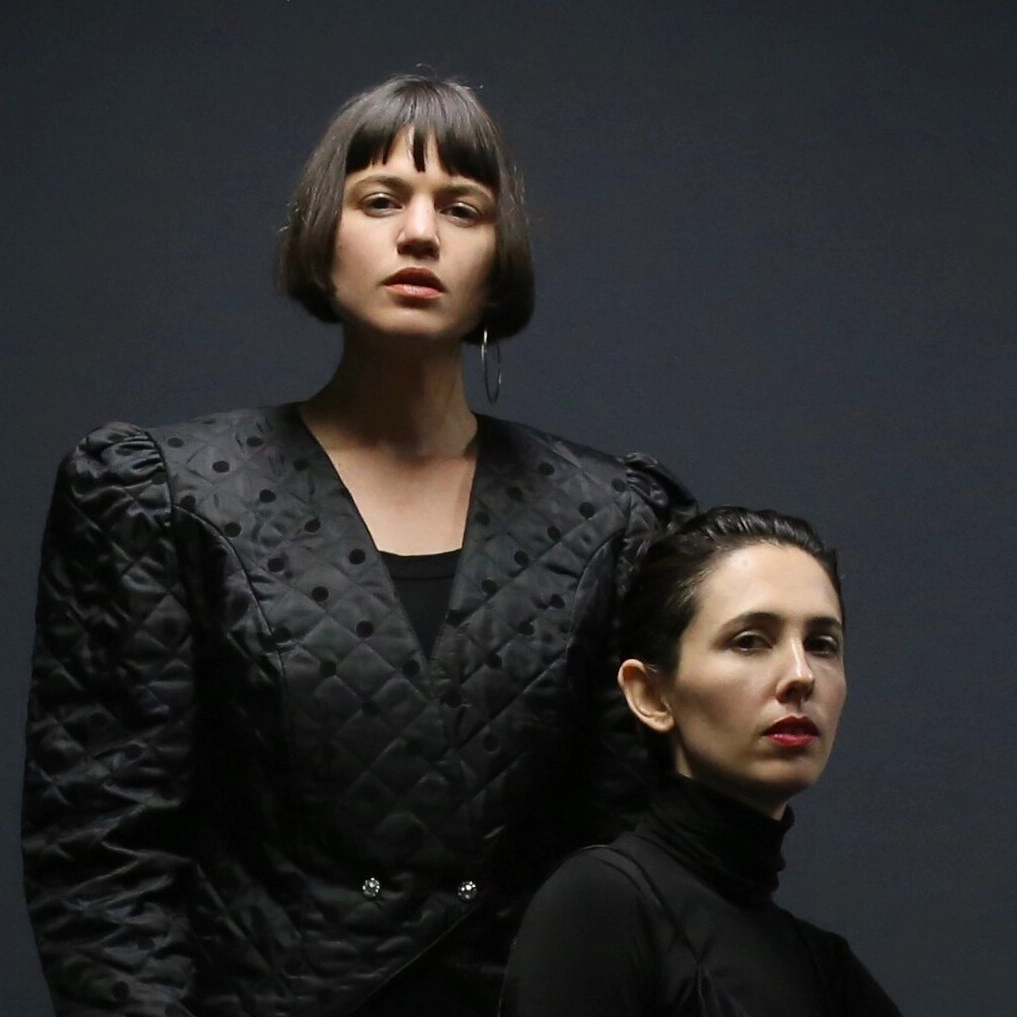
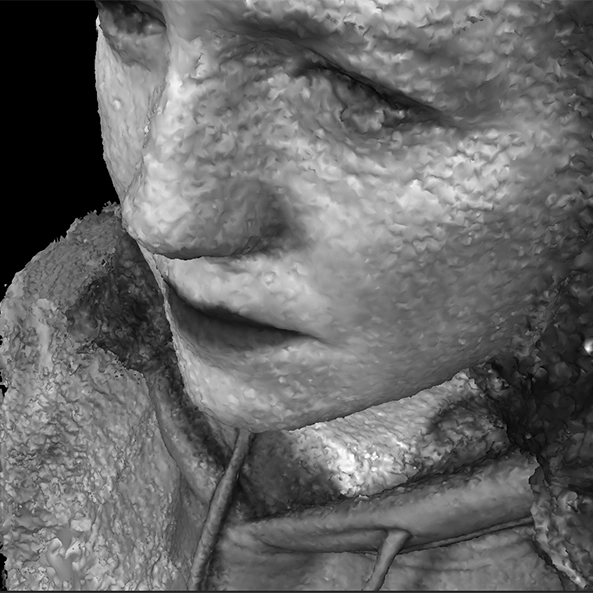
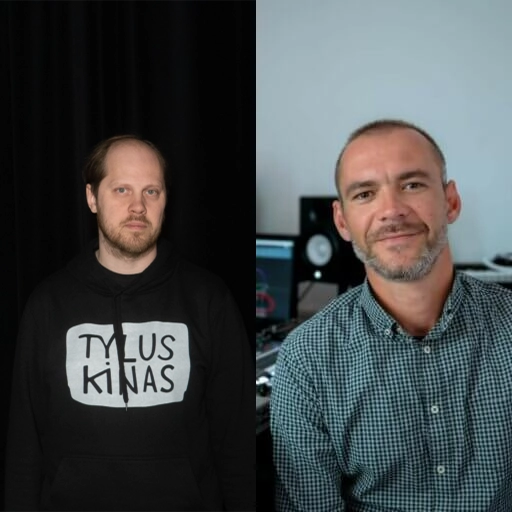

Deep Space 8k – Animation Festival: AI & Human. Who owns the truth?
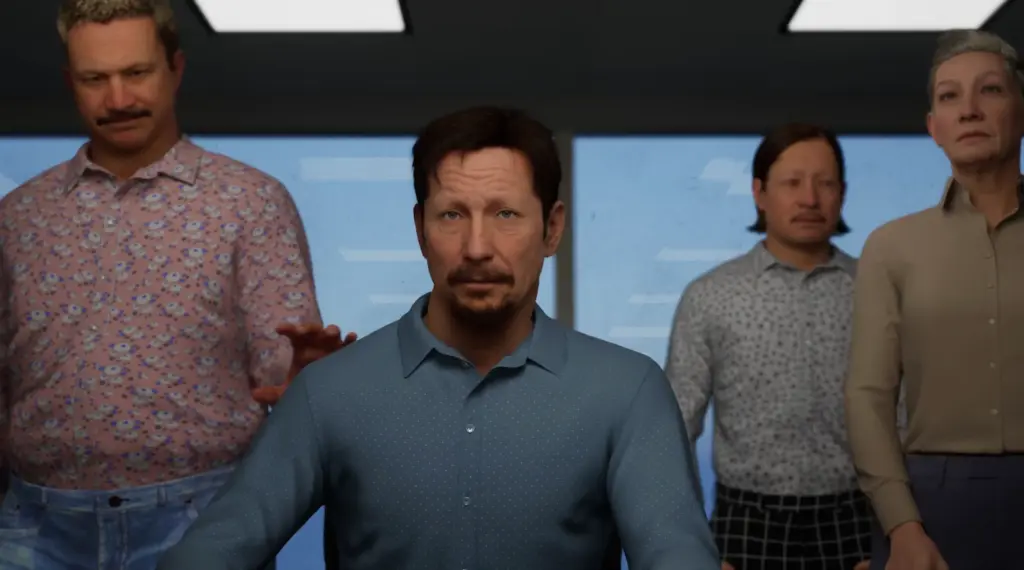 Is there a therapy for AI programs helping them to emancipate from discriminatory algorithms? Can a computer-generated avatar learn to do a proper backflip? What happens if humans and AIs are equal partners in the creative process? How do you prepare yourself for the synthetic future awaiting you? This unique showcase approaches topical disputes of our time, from data ownership and ethics of data harvesting to authorship in the age of AI, deep fakes, and image credibility.
Is there a therapy for AI programs helping them to emancipate from discriminatory algorithms? Can a computer-generated avatar learn to do a proper backflip? What happens if humans and AIs are equal partners in the creative process? How do you prepare yourself for the synthetic future awaiting you? This unique showcase approaches topical disputes of our time, from data ownership and ethics of data harvesting to authorship in the age of AI, deep fakes, and image credibility.
30 min
Ars Electronica Center, Deep Space 8K
Operator
Dejha Ti (US) and Ania Catherine (US), “the two critical contemporary voices on digital art’s international stages” (Clot Magazine) and “LGBT power couple” (Flaunt), are an LA-based experiential artist duo whose practice merges environments, technology, and performance art. Rooted in the understanding that immersion is not only a physical state, but also an emotional and […]
https://www.operator.la/Theresa Reiwer
Theresa Reiwer (DE) is a media artist, stage and costume designer living in Berlin. She studied film and theater studies at the FU Berlin, film in Istanbul at the Bilgi Üniversitesi and free art in the class stage and costume design at the kunsthochschule berlin weißensee (Deutschlandstipendium). In her own works, she stages physically accessible […]
https://www.theresareiwer.de/Antanas Skučas & Julius Zubavičius
Antanas Skučas (LT) is a Lithuanian director, animator, artist. Antanas is a graduate of M. K. Čiurlionis National Art School. In 2008 he got a degree of the Master of Arts, graduating from the Vilnius Academy of Fine Arts with his diploma work – Lithuanian mythological beings. His filmography includes Copy of Paste – a humorist […]
Ruini Shi
Ruini Shi 施蕊妮 (CN) is an animation director and crypto researcher based in London. Ruini explores virtual intimacy and creates narratives that interrogate the compatibility between humanity and emerging technologies. She holds BA in Interaction and Moving Images from London College of Communication and MA in Animation from the Royal College of Art. Ruini is […]
https://www.shiruini.com/14:00
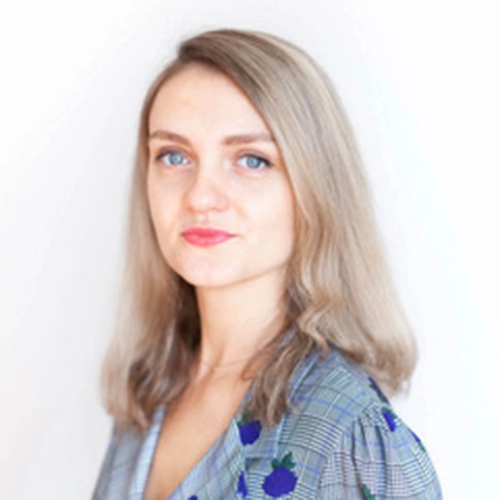

Welcome
The eleventh edition of the Expanded Animation Symposium, organized by the Hagenberg Campus of the University of Applied Sciences Upper Austria and Ars Electronica, will take place from September 8th to 10th as part of the Ars Electronica Festival 2023. In its eleven-year history, the Expanded Animation Symposium has examined the vast and constantly evolving field of animation and its myriad connections to other disciplines. Along this journey, the symposium has featured prominent and upcoming people, projects, and perspectives that have significantly shaped the current animation landscape. In addition to becoming a regular part of the Ars Electronica Festival, the symposium has expanded, developing from an initial one-day event to a three-day affair that includes multiple tracks, exhibitions, performances, and even an additional symposium, Synaesthetic Syntax. After last year’s successful return to a physical venue, this year’s symposium will continue this approach as part of the Ars Electronica Festival. Throughout the three-day event, the speaker panels will feature several international artists, researchers, and developers who will discuss—in a live setting—topics related to this year’s theme, “The Art of Performance.”
5 min
Daniela Duca De Tey
Daniela Duca De Tey (RO/DE) is a Berlin-based curator and cultural practitioner with a background in literature, cultural studies, and curating. Her particular area of interest lies in the practice of the curatorial, which she views as a dynamic fusion of creative expression, research methodology, and knowledge production, which includes, but also goes beyond, mere […]
https://www.danieladucadetey.de/Juergen Hagler
Juergen Hagler (AT) studied art education, experimental visual design, and cultural studies at the University for Art and Design in Linz, Austria. He currently works as a professor of Computer Animation and Animation Studies in the Digital Media department at the Hagenberg Campus of the University of Applied Sciences Upper Austria. Since 2014 he a […]
https://research.fh-ooe.at/de/staff/215
Artist Position – Miwa Matreyek: Embodying the Phantasmagoria
In this talk, Matreyek will discuss her artistic investigations into audience perception, illusions, and storytelling, through the lens of her latest work, Infinitely Yours. In the piece, she performs live as a shadow silhouette along with her kaleidoscopic animations as her figure shifts in perspective from a person, a metaphorical symbol of humanity, to even the Earth itself. The shadow traverses through various moments of crisis while embodying the creator and the destroyer, the one who is created and the one who is destroyed. Matreyek takes moments from news articles about the climate crisis – such as wildfires, flooding, extractions of resources, and pollution – and performs them as first-hand experiences happening upon a body. The shadow figure cowers, flees, and drowns – but also protects, discovers, and feels joy and hope. The phantasmagorical experience of Infintely Yours centers around creating a visceral experience of shared climate grief between the creator-performer and the audience.
40 min
Miwa Matreyek
Miwa Matreyek (US/CA) is an animator, designer, and performer originally based in Los Angeles, now based on the unceded traditional territories of the Coast Salish peoples of the xʷməθkwəy̓əm (Musqueam), Skwxwú7mesh (Squamish), and Səl̓ílwətaɬ (Tsleil-Waututh) Nations, also known as Vancouver BC. She has been an internationally touring artist since 2010. Coming from a background in […]
https://www.miwamatreyek.com
Artist Position – Akiko Nakayama: Alive Painting
I will talk about my life work, 'Alive Painting', and the discoveries and joys of collaboration of physics with the artist itself.
40 min
Akiko Nakayama
Akiko Nakayama (JP, *1988) is a painter who depicts the beauty of conveying energy metamorphosis through several media such as installation, videos, and performance. She brings the painting to life by combining the energy of movement and the vibrance of colors. Called “Alive Painting.” She depicts the resonance between shapes and textures using different types […]
http://akiko.co.jp/
Artist Position – Helen Starr: Performing Rendered Realities
Thinking through the intersectional and intergenerational AI adjacent artworks of Rebecca Allen, Rashaad Newsome and Kinnari Saraiya, this paper explores the notion of the human brain as a sophisticated machine that has the remarkable capacity to render multiple realities in which we perform our beliefs. These feminist, decolonial, queer performance works challenge the prevailing Eurocentric framework by acknowledging that multiple realities can exist simultaneously and without pathology. As humans, we are not confined to mere perception; instead, our brains actively engage in the process of rendering and creating diverse realities. Thus, the Human animal is both a self-sustaining (autopoietic) being and a creator who can influence the external world (allopoietic). We have the magical ability to self-maintain, allowing our bodies to regenerate cells, repair tissues, and maintain internal stability despite changes in the external environment. But what is even more extraordinary is our capacity to transcend this autopoiesis and venture into the realm of creation and innovation. In this duality, we are capable of not only shaping our own existence but also producing the tools to shape the external objects which impact on the world around us. Through our creativity and intelligence, we can create art, build infrastructure, and develop technology. This inherent ability to render multiple realities and impact the external world has allowed us to evolve into complex societies and cultures. While this simultaneous manifestation of both autopoietic and allopoietic aspects is most evident in humans, we can find similarities in other organisms and systems. Social insect colonies, certain plant systems, some AI systems such as “artificial life” and ecological systems also exhibit dual elements of self-sustaining autonomy and external interactions and modifications. This paper builds on the ideas of Maria Lugones and Sylvia Wynter to rethink Human performance as praxis. In essence, it will invite us to move beyond the surface level of performance and delve deeper into the profound implications of human actions. This perspective encourages us to consider performance not just as a mere act of showmanship but as a vehicle for social transformation where humanness is understood as a non-hierarchical, fluid category.
40 min
Helen Starr
Helen Starr (TT/UK) is a Afro-Carib curator, producer and cultural activist from Trinidad, WI. She began curating exhibitions with artists such as Susan Hillier, Cindy Sherman and Marcel Duchamp in 1995. Helen founded The Mechatronic Library in 2010, to give marginalised artists access to technologies such as Game Engines, Virtual Reality (VR), Augmented Reality (AR). […]
http://www.themechatroniclibrary.com/
Performative Acts – Stephan Schwingeler: Dead… what’s your point? The Artist as Spoilsport in the Context of the Digital Game Performance dead-in-iraq
40 min
Stephan Schwingeler
Prof. Dr. phil. Stephan Schwingeler (DE, *1979) is professor of Media Studies at HAWK University of Applied Sciences and Arts. His first book deals with the topic of space in video games and is one of the first art historical publications in the field of Game Studies. His Ph.D. thesis and second book examines the […]
http://www.stephanschwingeler.de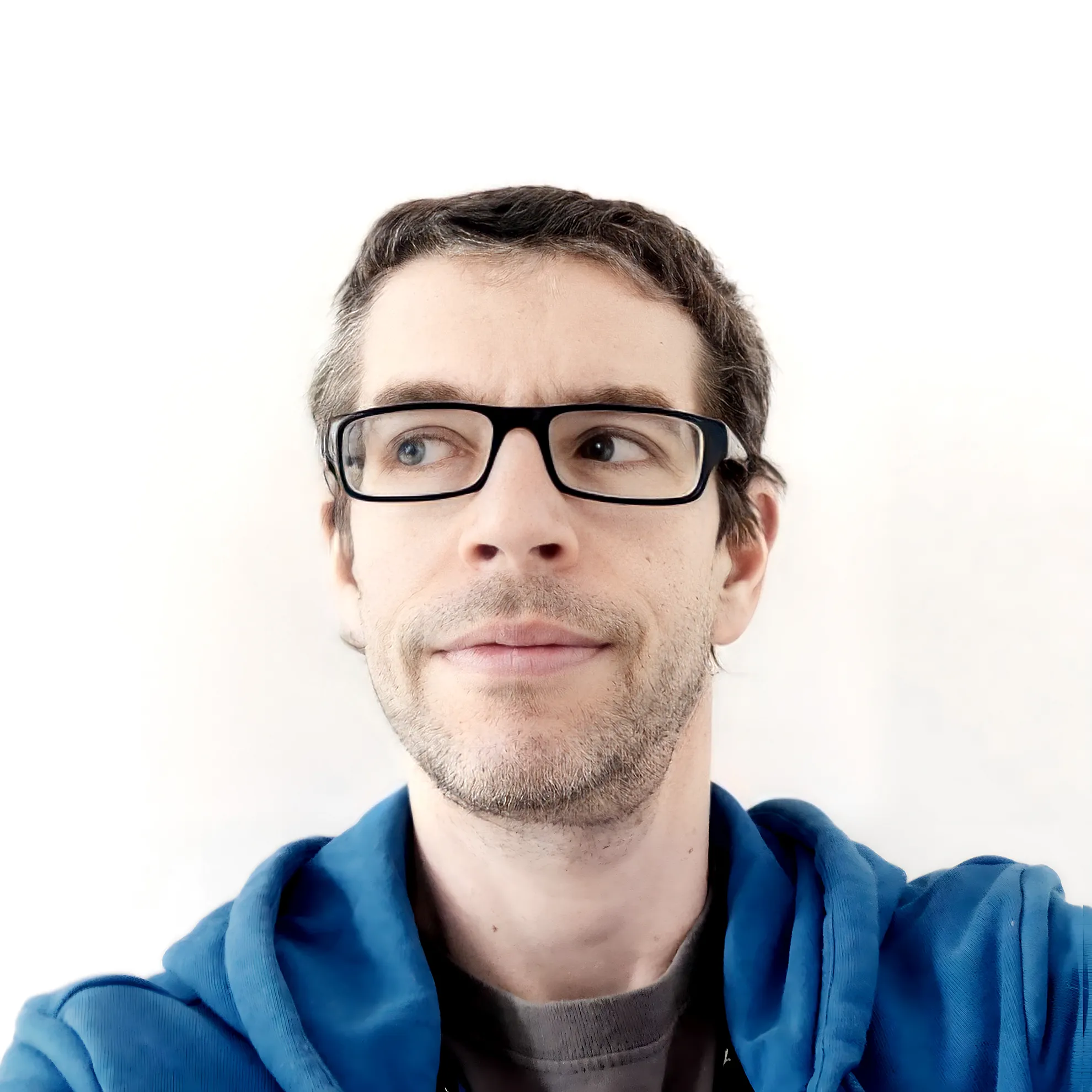
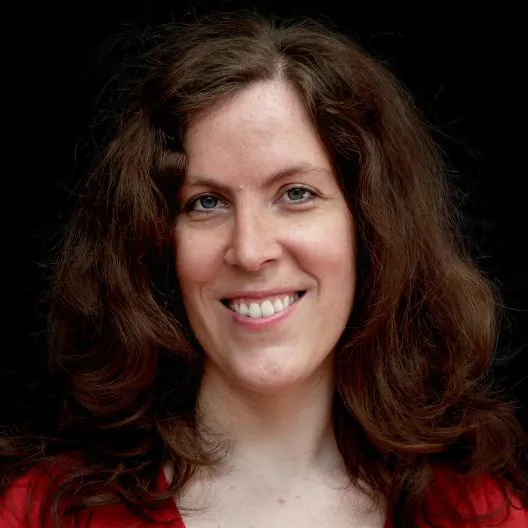
Performative Acts – gold extra: Games as Spaces for Communication
Reinhold Bidner and Sonja Prlić will present the latest works and concepts of their artist group gold extra. This talk will focus on their documentary projects Border Grid and Once Upon Unsteady Grounds, which combine aspects of theater, play, documentation and media art and move between real and digital space. They will provide insight into the technical and organizational development aspects of these globally developed projects, as well as into the conceptual and artistic work on cooperative and participatory artworks that see themselves as places of communication and explore new forms for digital performances.
40 min
Reinhold Bidner
Reinhold Bidner (AT) was born in Salzburg/Austria. He studied at University of Applied Sciences Salzburg, at Duncan of Jordanstone College of Art and Design, Scotland, Dundee (Animation and Electronic Media) and he graduated in Berlin and Salzburg. Until 2006 he was a key researcher at the Ars Electronica Futurelab in Linz in the field of […]
Sonja Prlić
Sonja Prlić (AT), PhD is a media artist, director, dramaturge and artistic researcher. Her studies led her via literature and dramaturgy to artistic computer games. In 1998 she co-founded the artists’ group gold extra and has since been working on projects between theatre, new media and computer games. Her interests include the development of new […]

Performative Acts – ANIMA PLUS
ANIMA PLUS was founded in the early summer of 2023 in Linz. The association's aim and purpose are to support animation art and culture in Upper Austria and beyond. ANIMA PLUS aims to serve as a platform for artists, thereby promoting cultural diversity. The association wishes to offer opportunities for all individuals interested in the topic to express their skills and talents, so as to develop their abilities free from economic constraints. ANIMA PLUS plans to manifest this ambition primarily through the coordination of public workshops emphasizing animation art, in conjunction with the staging and showcasing of animated projects produced within the association's auspices.
40 min
Lisa Gierlinger, Alessa Wolfram & Victoria Wolfersberger
Lisa Gierlinger (AT) is known as Lisa Mona, a freelance filmmaker of animated shorts, and a passionate artist & illustrator. With a flair for narration and emotion, the artist creates unique artwork with strong expressions and lively stories. While her interest to become an artist stemmed from a young age, her fascination for the captivating […]
https://www.animaplus.at
ASIFA Austria Forum – Pedro Harres: Storytelling and 2D Animation in 6DOF
A brief overview of what we have learned, sometimes the hard way, as a student team over the four years of making the 2D animated, interactive, 6DOF, VR-piece “From The Main Square”. Despite the support of the Babelsberg Film University, in which I was enrolled as a master student, in many senses, we were navigating uncharted waters and needed to invent a path of our own. As a seasoned animation director venturing himself in immersive storytelling for the first time, it was a deep shift in many previous notions regarding storytelling through moving images. All of the production tools and methods we've gathered from previous projects needed to be meaningfully adapted, if not discarded, with almost no exception. Much of the syntax we used to progress the story throughout the piece had to be invented during production, and therefore thoroughly tested. Some of these mechanisms shall be demonstrated live. From The Main Square is a multi-awarded VR-piece out in the festival circuit, since 2022. It gathered numerous recognitions including the Grand Jury Prize in Venice 79th, the Grand Prix in New Images 2023 and the Festivals Connexion VR Award at the International Animation Festival of Annecy recently. The piece lasts approximately 22 minutes and depicts the rise and downfall of a society shattered by polarisation. It is a compact illustration of social disruption in the form of an animated “Wimmelbild”. The script is a collage of occasionally funny, eventually brutal urban absurdities experienced in societies undergoing political polarisation and environmental collapse.
40 min
Pedro Harres
Pedro Harres (BR/DE) is a Berlin-based Brazilian animation director, scriptwriter, and multimedia artist. He studied film, animation, and philosophy. His work varies greatly in terms of style and formats, including installations, films, and XR. However, an allegorical use of space can be perceived as a constant throughout his work; space considered not only as support […]
http://pedroharres.net/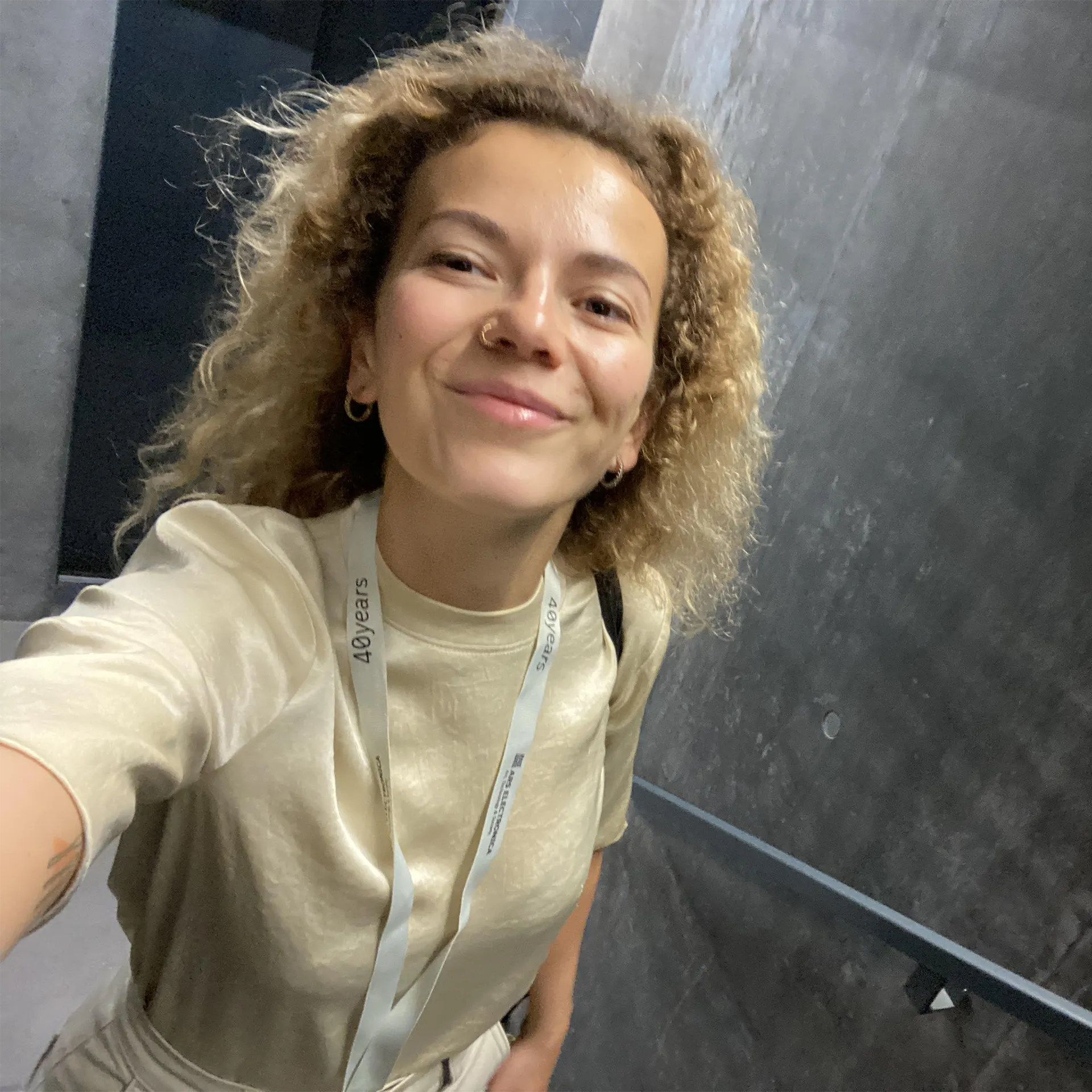
ASIFA Austria Forum – Fanni Fazakas: Breaking Taboos with XR
How do we elevate the stories of underestimated people in XR? Through the case study of Missing 10 Hours VR - a multi-ending interactive piece about the Bystander Effect and date-rape drugs - I will share our rapid-prototyping process to help you move your ideas from scribble to story. We'll explore unconventional ways to use the medium for measurable positive impact, including worldbuilding, animation, and diverse and authentic character design. If you're tired of diversity panels that make no real change or if you're curious about the secrets of XR for Impact and the tools that make it more accessible, this talk is for you. Join me in the revolution!
40 min
Fanni Fazakas
Fanni Fazakas (HU) is an Unreal Engine Technical Artist, Director and Researcher. Her current project, Missing 10 Hours VR, is a non-fiction Virtual Reality experience with multiple endings that explores the use of GHB as a date-rape drug and the Bystander Effect. The project has earned recognition as the Best in Show VR at Siggraph […]
https://rumexr.com/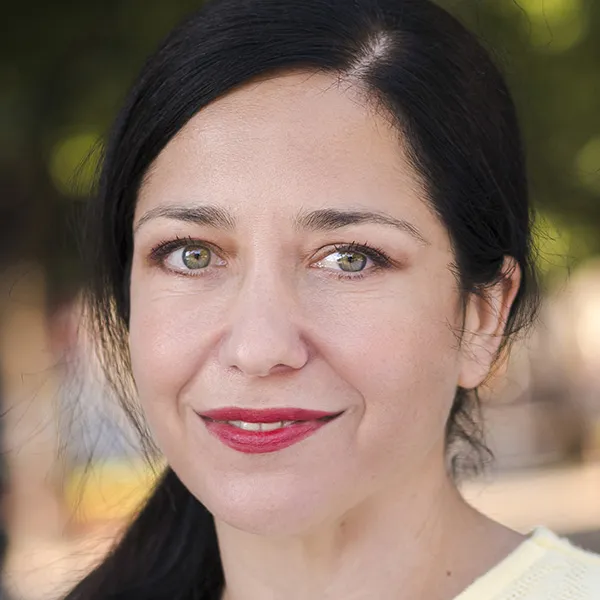
ASIFA Austria Forum – Kris Hofmann: Perform to Communicate
The most exciting feature of augmented reality is the technology’s ability to merge the physical world with an imaginary, virtual world. How can we blend the two in the best possible way to create a true sense of convergence? Most of the time, visual realism is not what we aim for as animators. Whether it is plants, animals or other people – the world reacts to our presence. Well thought-out interaction can make us part of the narrative and reinforce the notion that the experience is part of what we perceive as the ‘real’ world. Interaction empowers people who visit the worlds and characters we create and helps nudge passive observers into becoming story explorers. Kris will talk about her work with animation and augmented reality, focussing on an ongoing collaboration with the animal welfare organisation FOUR PAWS to create a virtual character that inhabits the animal sanctuaries the non-profit runs across the globe.
40 min
Kris Hofmann
Currently based in Vienna, Kris (AT) has been working as an animator and animation director since graduating from the Royal College of Art in London in 2010. Since 2018 her focus has been the design of immersive experiences. Her first site-specific augmented reality story, ‘The Bookworms’, was directed and produced for the Austrian National Library […]
https://www.krishofmann.co.uk/
Deep Space 8k – Animation Festival: Akiko Nakayama
 Akiko Nakayama will comment on the side of video excerpts from previous performances giving insight into her technique called *Alive Painting*. The audience will witness her vivacious transformations of various mediums and colors and engage in a conversation about the curious relationship between painting, performance, and animation art.
Akiko Nakayama will comment on the side of video excerpts from previous performances giving insight into her technique called *Alive Painting*. The audience will witness her vivacious transformations of various mediums and colors and engage in a conversation about the curious relationship between painting, performance, and animation art.
30 min
Ars Electronica Center, Deep Space 8K
Akiko Nakayama
Akiko Nakayama (JP, *1988) is a painter who depicts the beauty of conveying energy metamorphosis through several media such as installation, videos, and performance. She brings the painting to life by combining the energy of movement and the vibrance of colors. Called “Alive Painting.” She depicts the resonance between shapes and textures using different types […]
http://akiko.co.jp/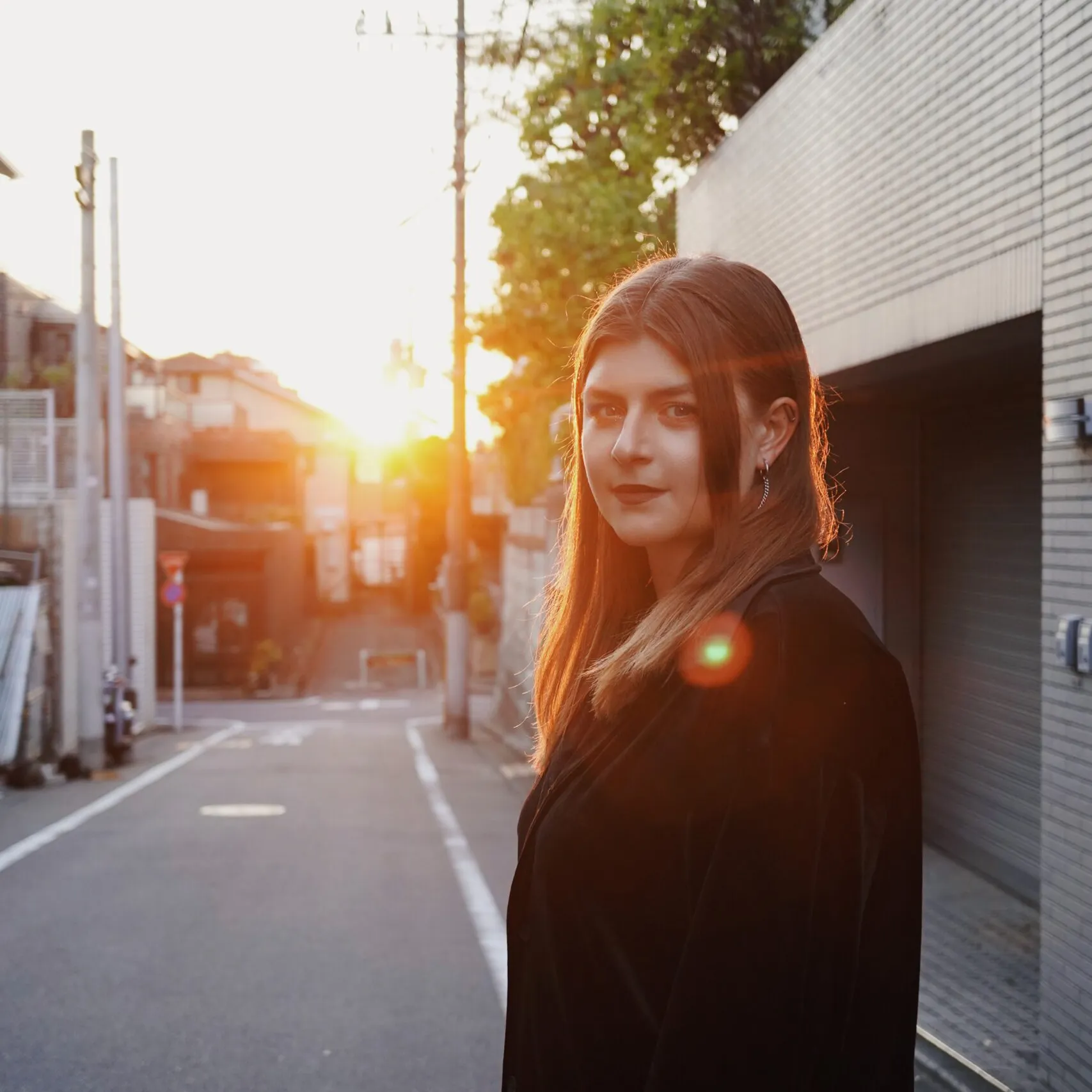
Deep Space 8k – Animation Festival: Rebecca Merlic
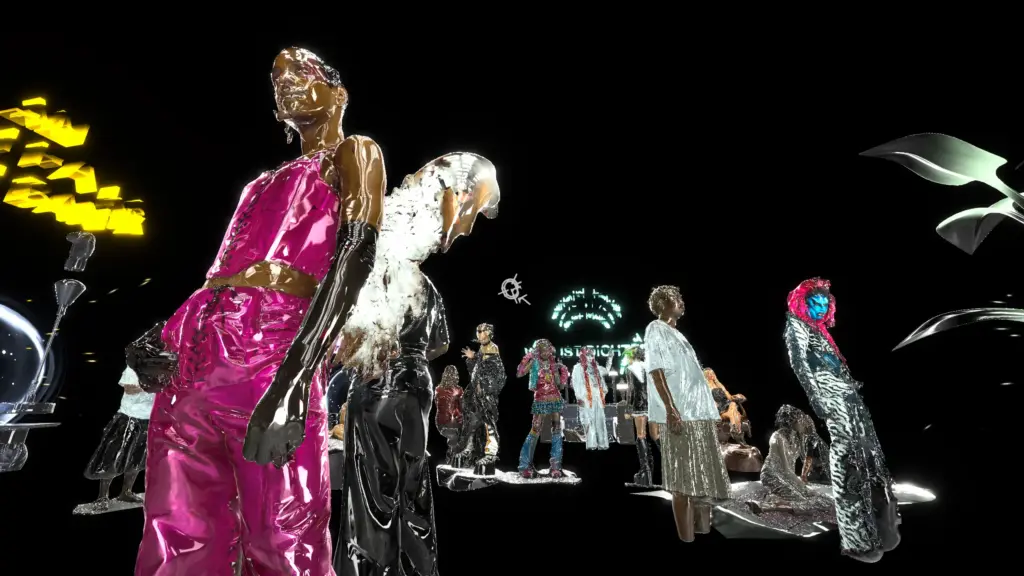 Glitchbodies(Honorary Mention Prix Ars Electronica 2023) is an interactive game and multiplatform project encompassing new forms of feminism, LGBTQ+, and Drag transformations. While playing the game, participants become part of an interactive digital space. They are invited to join a fluid journey in which they take up non-heteronormative gender positions and step into a mesmerizing loop of diverse bodies, minds, and thoughts.
Glitchbodies(Honorary Mention Prix Ars Electronica 2023) is an interactive game and multiplatform project encompassing new forms of feminism, LGBTQ+, and Drag transformations. While playing the game, participants become part of an interactive digital space. They are invited to join a fluid journey in which they take up non-heteronormative gender positions and step into a mesmerizing loop of diverse bodies, minds, and thoughts.
30 min
Ars Electronica Center, Deep Space 8K
Rebecca Merlic
Rebecca Merlic (DE/HR/AT, *1989 in Germany) is a European digital artist and architect and experimental filmmaker. She graduated with distinction at the Academy of Fine Arts Vienna, where she studied under Wolfgang Tschapeller, Francois Roché and Michael Hannsmeyer. During her masters she was able to study at Astushi KITAGAWARA Lab at Tokyo University of the […]
https://rebeccamerlic.myportfolio.com/%20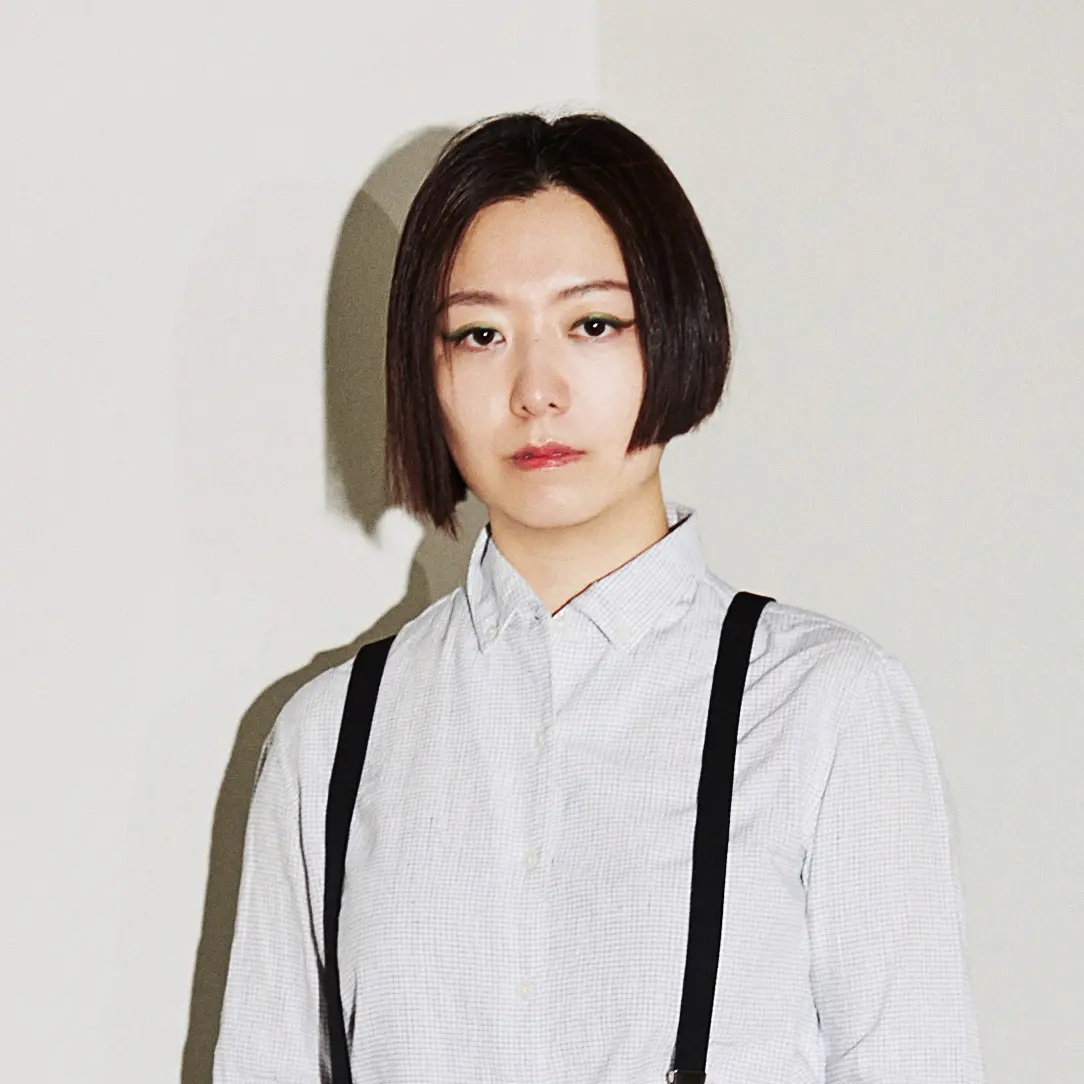
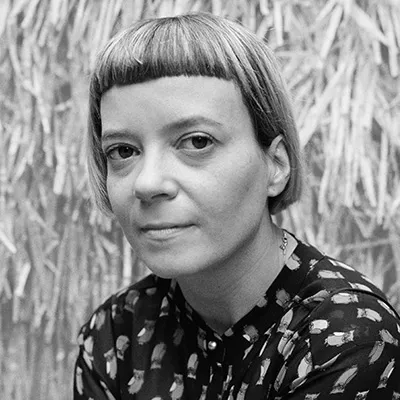

Prix Forum: Golden Nica – Ayoung Kim
Jury members in the Prix Category New Animation Art, Nora O Murchú and Helen Starr will moderate a discussion with Golden Nica winner Ayoung Kim (KR) and the two Award of Distinction winners Bassam Issa (IE) and SANGHEE (KR). Ayoung Kim (KR) is an artist with a very diverse practice, blending geopolitics, mythology, technology, and futuristic iconography. Her artworks take the forms of video, virtual reality (VR), game simulation, sonic fiction, and text. She synthesizes the outcomes of far-reaching speculation, establishing connections between biopolitics and border controls, the memories of stones and virtual memories, and ancestral origins and imminent futures.
20 min
Ayoung Kim
Ayoung Kim (KR) is an artist with a very diverse practice, blending geopolitics, mythology, technology, and futuristic iconography. Her artworks take the forms of video, virtual reality (VR), game simulation, sonic fiction, and text. She synthesizes the outcomes of far-reaching speculation, establishing connections between biopolitics and border controls, the memories of stones and virtual memories, […]
https://ayoungkim.com/Nora O’ Murchú
Nora O’ Murchú (IE) is a curator & researcher. In her curatorial work she explores online culture and the implications of technological developments. Her multidisciplinary practice embraces narratives, and fictions and results in objects, exhibitions, and interventions. Her research aims to help people understand how complex socio-technical systems are imagined, built & used. She has […]
http://www.noraomurchu.com/Helen Starr
Helen Starr (TT/UK) is a Afro-Carib curator, producer and cultural activist from Trinidad, WI. She began curating exhibitions with artists such as Susan Hillier, Cindy Sherman and Marcel Duchamp in 1995. Helen founded The Mechatronic Library in 2010, to give marginalised artists access to technologies such as Game Engines, Virtual Reality (VR), Augmented Reality (AR). […]
http://www.themechatroniclibrary.com/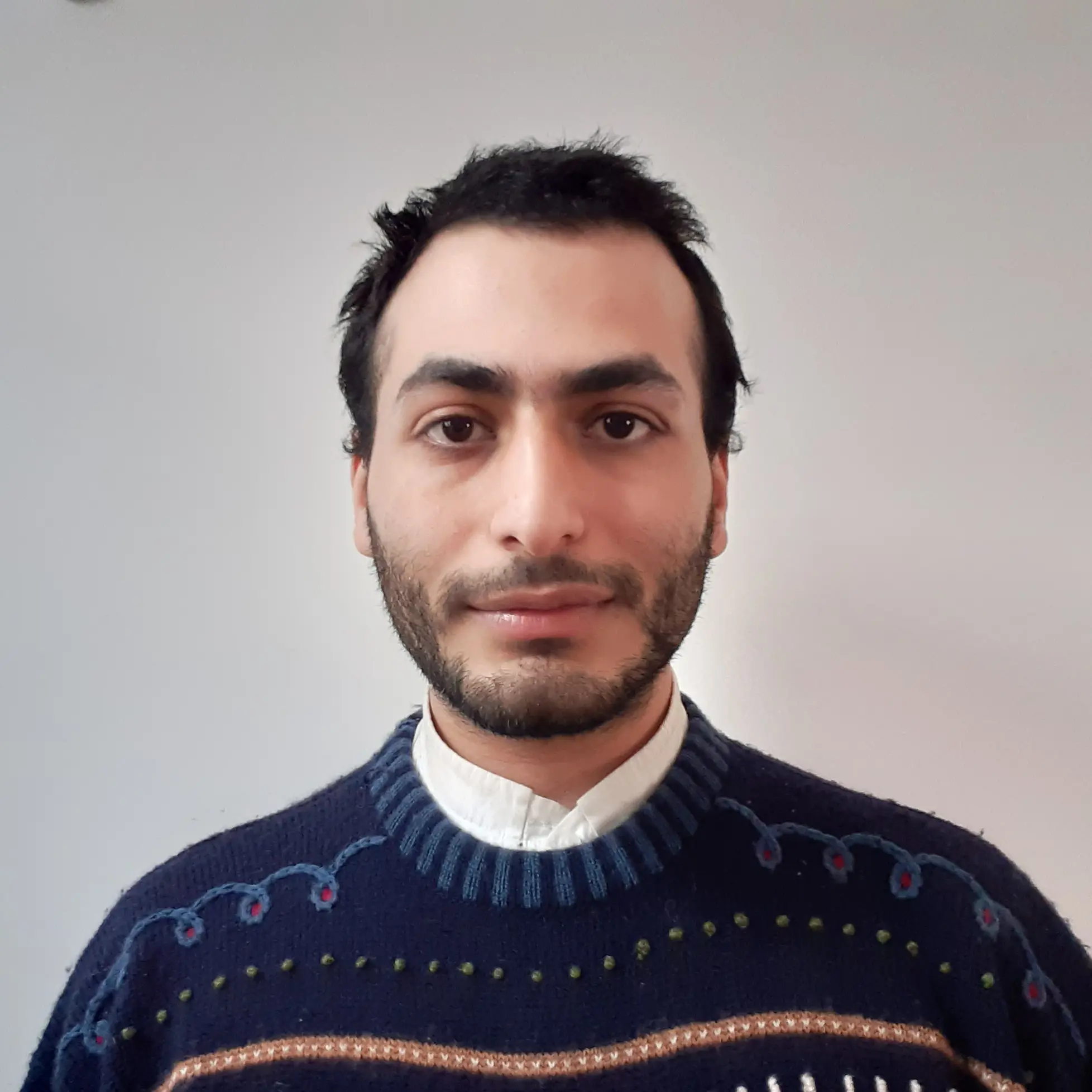


Prix Forum: Award of Distinction – Bassam Issa
Jury members in the Prix Category New Animation Art, Nora O Murchú and Helen Starr will moderate a discussion with Golden Nica winner Ayoung Kim (KR) and the two Award of Distinction winners Bassam Issa (IE) and SANGHEE (KR). Bassam Issa (IE) works across digital animation, painting, sculpture, and textiles creating visions of resistance, transformation, and queer possibility. He completed a BA in Visual Art Practice from Dún Laoghaire Institute of Art, Design and Technology in 2016. His work is part of collections in IMMA, the Arts Council, and Dun Laoghaire Rathdown County Council. In 2021 he received the Golden Fleece Award, and he is currently a studio member at Temple Bar Gallery + Studios. Al-Sabah lives and works in Belfast and Dublin.
20 min
Bassam Issa
Bassam Issa (IE) works across digital animation, painting, sculpture, and textiles creating visions of resistance, transformation, and queer possibility. He completed a BA in Visual Art Practice from Dún Laoghaire Institute of Art, Design and Technology in 2016. His work is part of collections in IMMA, the Arts Council, and Dun Laoghaire Rathdown County Council. […]
https://bassamissa.xyz/Nora O’ Murchú
Nora O’ Murchú (IE) is a curator & researcher. In her curatorial work she explores online culture and the implications of technological developments. Her multidisciplinary practice embraces narratives, and fictions and results in objects, exhibitions, and interventions. Her research aims to help people understand how complex socio-technical systems are imagined, built & used. She has […]
http://www.noraomurchu.com/Helen Starr
Helen Starr (TT/UK) is a Afro-Carib curator, producer and cultural activist from Trinidad, WI. She began curating exhibitions with artists such as Susan Hillier, Cindy Sherman and Marcel Duchamp in 1995. Helen founded The Mechatronic Library in 2010, to give marginalised artists access to technologies such as Game Engines, Virtual Reality (VR), Augmented Reality (AR). […]
http://www.themechatroniclibrary.com/


Prix Forum: Award of Distinction – SANGHEE
Jury members in the Prix Category New Animation Art, Nora O Murchú and Helen Starr will moderate a discussion with Golden Nica winner Ayoung Kim (KR) and the two Award of Distinction winners Bassam Issa (IE) and SANGHEE (KR). SANGHEE (KR) did photography while majoring in sociology. Her photos emphasize the objects and places functioning as extensions of the Human body. In line with such emphasis, She currently focuses on the affective gaps experienced when the physical input in the real world has an output into the virtual world or via the virtual world. Another main focus in her works is the way class distinction cooperates or conflicts with technology-intensive media. She uses various genres, such as VR, Sound performance, and Video games, as her medium.
20 min
SANGHEE
SANGHEE (KR) did photography while majoring in sociology. Her photos emphasize the objects and places functioning as extensions of the Human body. In line with such emphasis, She currently focuses on the affective gaps experienced when the physical input in the real world has an output into the virtual world or via the virtual world. […]
https://sanghee.xyz/Nora O’ Murchú
Nora O’ Murchú (IE) is a curator & researcher. In her curatorial work she explores online culture and the implications of technological developments. Her multidisciplinary practice embraces narratives, and fictions and results in objects, exhibitions, and interventions. Her research aims to help people understand how complex socio-technical systems are imagined, built & used. She has […]
http://www.noraomurchu.com/Helen Starr
Helen Starr (TT/UK) is a Afro-Carib curator, producer and cultural activist from Trinidad, WI. She began curating exhibitions with artists such as Susan Hillier, Cindy Sherman and Marcel Duchamp in 1995. Helen founded The Mechatronic Library in 2010, to give marginalised artists access to technologies such as Game Engines, Virtual Reality (VR), Augmented Reality (AR). […]
http://www.themechatroniclibrary.com/
Virtual Stages – Rebecca Merlic: GLITCHBODIES
The lecture at the Expanded Animation Symposium 2023 will explore GLITCHBODIES, a multi-platform project consisting of a visual novel game, VR-game experience, animation movie, and performance piece which presents the stories of 59 protagonists from different international cities. The project seeks to investigate new forms of feminism, queer transformations, and sensitive representations of the protagonists, to bring diverse perspectives into the male-dominated digital gaming world. A discussion of the project's interactive digital space, which provides a safe platform for exploring alternative gender positions from a queer and political perspective, will be included in the presentation. The primary focus will be on the project's mission of sharing the experiences of diverse individuals and celebrating its protagonists in the format of breaking the boundaries of performance art using game engines, live gaming, live sound creation. Created through collaborations and rituals GLITCHBODIES explores new forms of feminism, LGBTQ+, Drag transformations and intimate sensitive representations of the protagonists and aims to bring them to a wider audience trough the stage of performance. How can performers be represented in digital safer space and then be brought back to the analogue world to generate a new audiovisual Act of performance? What does it mean to provide a safer platform for non-heteronormative gender positions sharing the notion of queer as political attitude, providing new perspective for the player while celebrating its protagonists with motherly care? How can new technologies and co-creative inclusive production processes blur the boundaries between digitality and virtuality and reality.
40 min
Rebecca Merlic
Rebecca Merlic (DE/HR/AT, *1989 in Germany) is a European digital artist and architect and experimental filmmaker. She graduated with distinction at the Academy of Fine Arts Vienna, where she studied under Wolfgang Tschapeller, Francois Roché and Michael Hannsmeyer. During her masters she was able to study at Astushi KITAGAWARA Lab at Tokyo University of the […]
https://rebeccamerlic.myportfolio.com/%20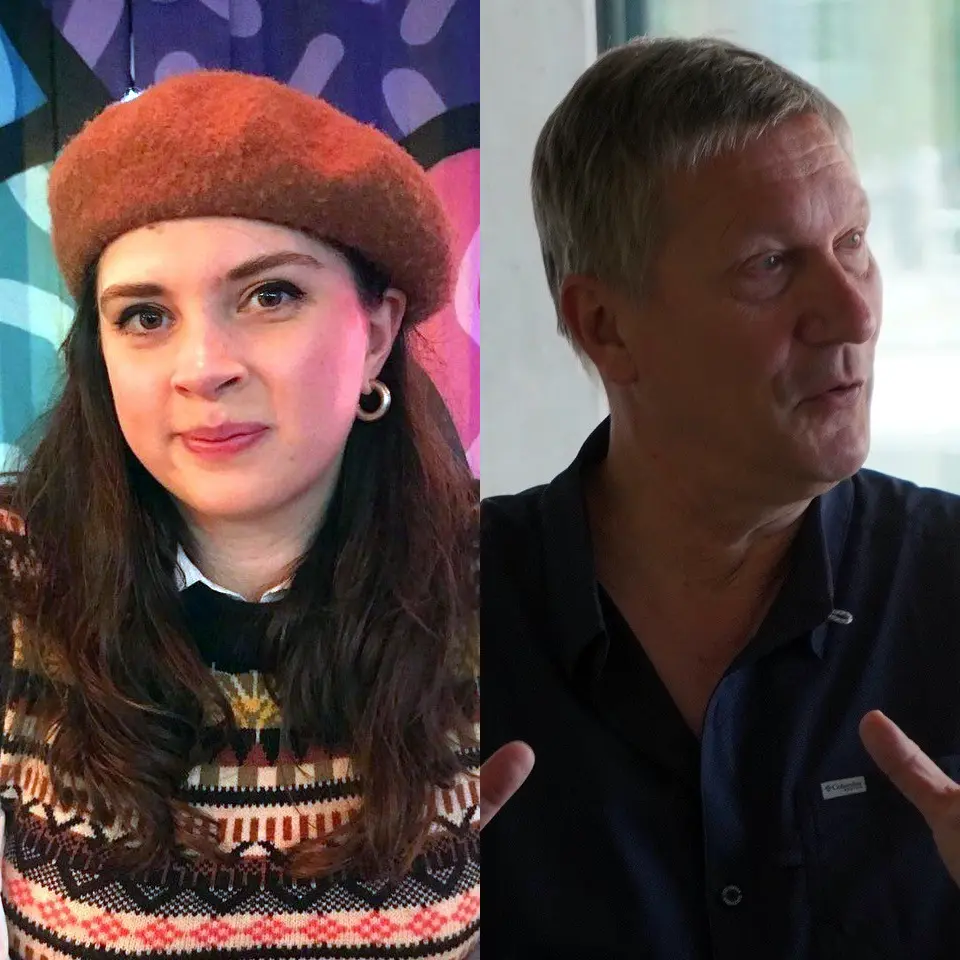
Virtual Stages – PlayOn!: New Storytelling
For four years, the theatre network PlayOn! has been exploring how traditional theatres can use new storytelling to expand their scope and possibilities. How audience can become co-creators of stories? What immersive technologies on stage demand from theatre artists and enrich audiences? The PlayOn! consortium consists of 9 European theatres and as many tech universities. Together they have so far produced almost two dozen theatre performances that combine new storytelling and immersive technologies. The key objectives of PlayOn! are
- to develop new forms of creative storytelling building on narrative structures used in the creative game sector;
- to merge new storytelling with a variety of immersive technologies;
- to use this new format to extend theatre towards the public urban space with relevant stories.
40 min
Lucy Hammond & Dirk Neldner
Lucy (UK) is Projects Producer at Pilot Theatre and Creative Producer/Director for their projects that use immersive technology. Her work is focused on immersive and interactive storytelling. Her most recent projects include ’The Archive’, an interactive game exploring happiness and the VR experience ‘Monoliths’, celebrating the voices of northern women and the northern landscape. Lucy’s […]
https://www.play-on.eu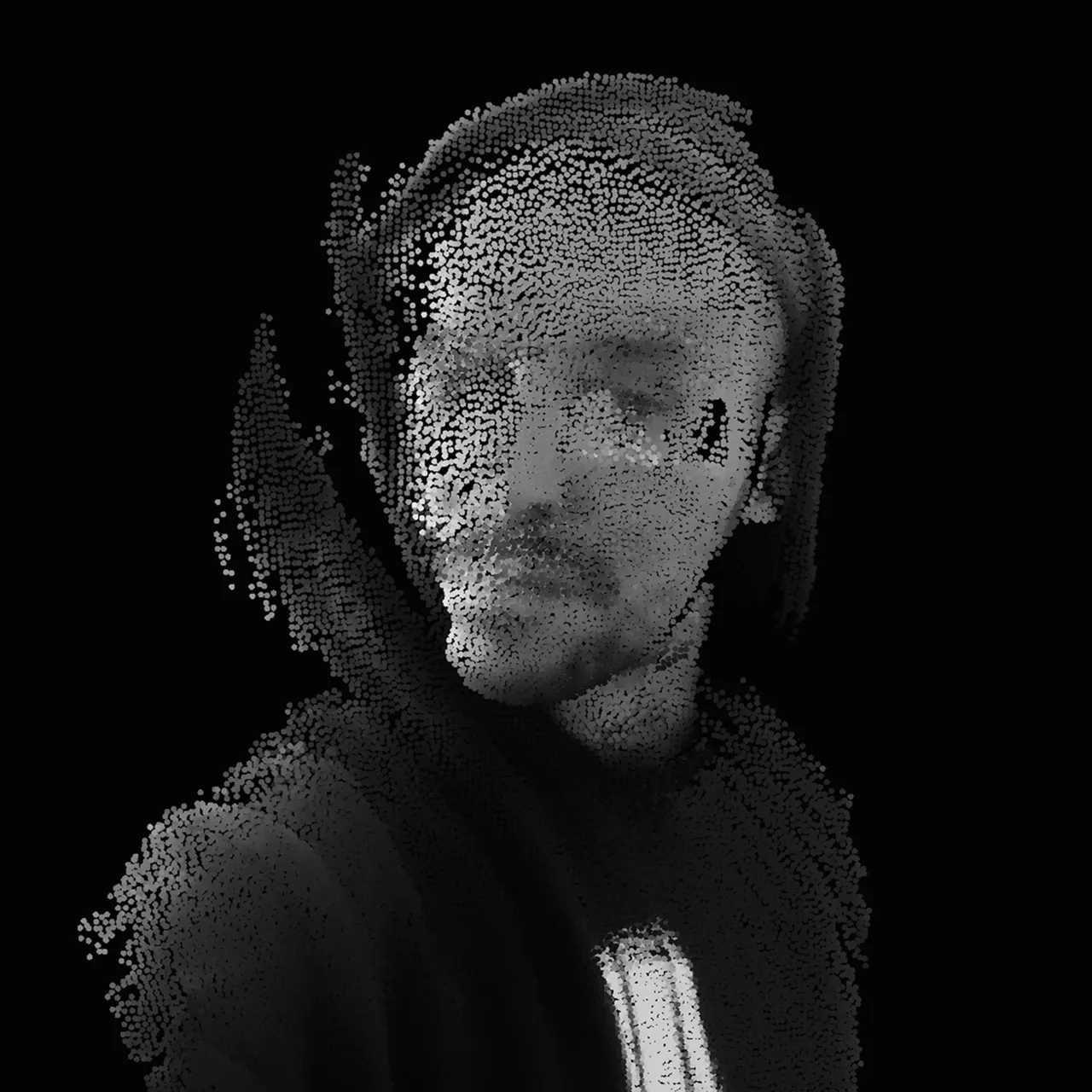
Virtual Stages – minus.eins
Nils Corte, Nils Gallist and Roman Senkl will present minus.eins' digital and hybrid work.
40 min
Nils Corte, Nils Gallist & Roman Senkl
minus.eins are a Berlin based digital theatre and arts project, with a strong focus in innovative technologies and interactive storytelling. They research, develop and produce mixed and virtual reality theatre, interactive software and (post)digital media arts. Their latest productions have been nominated for FAUST Prize and for the Digital Showcase of Theatertreffen Berlin.
https://www.staatstheater-nuernberg.de/content/xrt

Synaesthetic Syntax – Welcome
Birgitta Hosea (SE/UK) and Juergen Hagler (AT) welcome you to this year's Synaesthetic Syntax.
5 min
Birgitta Hosea
Birgitta Hosea (SE/UK) is an artist, filmmaker, and researcher in expanded animation. Exhibitions include Venice & Karachi Biennales; Oaxaca & Chengdu Museums of Contemporary Art; InspiralLondon; Hanmi Gallery, Seoul. She has a solo exhibition at ASIFAKeil, Vienna in April 2020. Included in the Tate Britain and Centre d’Arte Contemporain, Paris, archives, she has been awarded […]
http://www.birgittahosea.co.uk/Juergen Hagler
Juergen Hagler (AT) studied art education, experimental visual design, and cultural studies at the University for Art and Design in Linz, Austria. He currently works as a professor of Computer Animation and Animation Studies in the Digital Media department at the Hagenberg Campus of the University of Applied Sciences Upper Austria. Since 2014 he a […]
https://research.fh-ooe.at/de/staff/215
Panel I – The Haptic Body In Action
Panel I consists of three presentations and a follow-up discussion.
1h 10m
Birgitta Hosea
Birgitta Hosea (SE/UK) is an artist, filmmaker, and researcher in expanded animation. Exhibitions include Venice & Karachi Biennales; Oaxaca & Chengdu Museums of Contemporary Art; InspiralLondon; Hanmi Gallery, Seoul. She has a solo exhibition at ASIFAKeil, Vienna in April 2020. Included in the Tate Britain and Centre d’Arte Contemporain, Paris, archives, she has been awarded […]
http://www.birgittahosea.co.uk/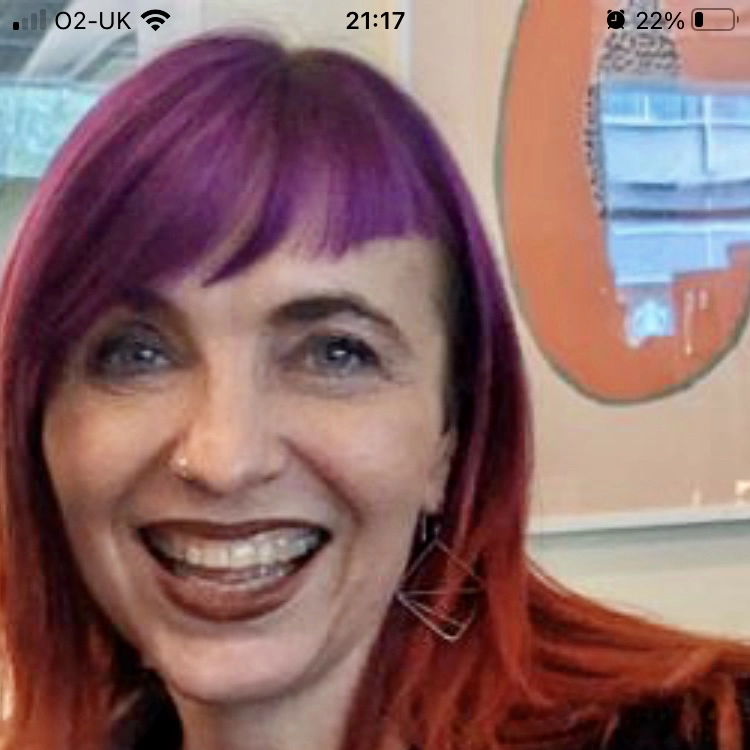
Camille Baker: Haptics and the role of the body as interface to the virtual experiences in immersive artistic experiences
While narrative and design grammars for making virtual reality and immersive experiences are still in development, designers and artists are starting to better understand what audiences respond to within the experiences they design. Some research is in development to make bespoke haptic garments as interfaces to send and receive sensation, enabling wearers to interact with each other’s bodies within immersive virtual and mixed reality spaces and contexts for performance and other social interaction. In most immersive VR experiences, embodiment or embodied presence ideally should involve the “…awareness of bodily sensations… [so that in] The combination of VR and interception …not only do you feel like you’re in a VR environment, but because you’ve consciously worked to integrate your bodily sensations into VR, it's a full, more vivid version of presence.” (Rubin, 2018:51) “Touch is the oldest sense, and most urgent sense” (Ackerman 1990). It can be argued that “we need continual intimate interaction with others through physical contact in order for the brain to be properly and continuously regulated; online or mobile connections do not suffice” (Baker CC 2018). Haptic interfaces are a major factor in feeling immersed, embodied being in and interacting with the world and others in virtual contexts. “…embodiment and its various states can be described as: (1) being in the body, the mind—body integration; and (2) being in the body, but also sensing and extending the mind, such as (3) …. within virtual worlds, space and other immersive environments – and to some extent through the internet and in social media…” and “ …the embodied, in-person aspects of liveness and how our bodies connect the technologies of modern living....that technology and the body meet, to interface to extend beyond the boundary of skin, and our engagement with technology occurs in the process. (Idhe (2002: 5–7, quoted in Baker 2018:60) In VR embodiment, also called embodied presence is …interception… awareness of bodily sensations… [so that in] The combination of VR and interception …not only do you feel like you’re in a VR environment, but because you’ve consciously worked to integrate your bodily sensations into VR, its a full, more vivid version of presence.”(Rubin, 2018:51) Touch is combined with the other sensory modalities to form a coherent and robust percept of the world. By creating emotional and physical connections within VR experiences through narrative and physical actuation, using haptic interfaces is the best way elicit a fully embodied experience for ‘immersants’(Char Davies’ 2004). In the author’s practice, creating an emotional and physical connection between VR experiences and narrative and physical actuation through haptic interfaces is the best way to create a fully immersive experience for audiences. This paper will discuss discoveries from the design and exhibition of the author’s virtual reality (VR) installation artwork in particular, INTER/her, as well as other personally experienced works, and the role of haptics in making audience experiences richer, deeper, visceral and personal.
20 min
Camille Baker
Camille Baker (UK) is an artist-performer/researcher/curator within various art forms: immersive experiences, participatory performance, interactive art, mobile media art, tech fashion/soft circuits/DIY electronics, responsive interfaces and environments, and emerging media curating. Maker of participatory performance and immersive artwork, Baker develops methods to explore expressive non-verbal modes of communication, extended embodiment, and presence in real and […]
https://camillebaker.me/
Darren Woodland: Echoes of Harmonic Threads: Weaving Afrofuturist Narratives through Cloth, Dance, and Sonic Identity
Echoes of Harmonic Threads is an interdisciplinary arts-based research and performance project that investigates the confluence of animated cloth, sonic identity (LaBelle, 2018), and Afrofuturism in an immersive co-created environment. Set against a projected virtual backdrop that mirrors and responds to a live dancer's movements, this investigation explores engagement with human kinesthetics, the live body in motion, and themes of bondage, freedom, and speculative futures/pasts through a lens of poetry and musical motif rooted in the heritage and posterity of Black culture and the African diaspora. In this setting, the audience is presented with physical fragments of cloth with which they can interact through touch. Limited to a small number of participants at a time, their manipulations of these tangible threads influence the dancer's virtual canvas, creating a symbiotic, real-time dialogue. The audience's involvement with the physical cloth directly manipulates the properties of the virtual. The virtual cloth's visual and temporal properties, such as gravity, weight, texture, and its sonic attributes, pitch, amplitude, and timbre, evolve throughout the performance, reflecting the dancer's embodied experience and the audience's participatory interactions within the structure of Afrofuturist narrative themes, simultaneously addressing the human ritual of wrapping our bodies in cloth (Schneider, 1987). Drawing from the rich tapestry of Afrofuturism, the project delves into sonic performativity, animated materiality, and the deep connections between the human body, technology, and imagination. The dancer's costume, illuminated by the projected animations, serves as an extension and augmentation of their body, a reflection of their narrative identity (Brandstetter, 2015), and a bridge between the physical and the virtual worlds. With every ripple of the virtual cloth, a dialogue unfolds—echoing an improvisational symphony pulsating unpredictably. Through this exploration, the project aims to blur the once-concrete boundaries between flesh, costume, and digital matter, ushering us into an extraordinary tableau of human-digital coexistence. The practical implementation of the project emphasizes the dynamic interplay between the dancer, the virtual cloth, and audience participation in improvisational feedback with sound. This improvisation and generative structure are based on historical reflections of Black culture echoed in the forms of jazz music, blues music, poetry, and Afrofuturist literature (Hamilton, 2017). Echoes of Harmonic Threads contextualizes existing research in movement, body, sound, and space while exploring the importance of costume and cloth in dance and music performance, and the performativity of sound and identity. This project seeks to explore and celebrate Black cultural heritage while challenging traditional approaches to the medium and pushing the boundaries of Afrofuturism. References:
- Brandstetter, G. (2015). Dance costume and movement space: Spatial formulas and their metamorphoses into fabric. In Poetics of Dance: Body, Image, and Space in the Historical Avant-Gardes (pp. 131-148). Oxford Studies in Dance Theory. New York: Oxford Academic. https://doi.org/10.1093/acprof:oso/9780199916559.003.0008
- Hamilton, E. C. (2017). Afrofuturism and the Technologies of Survival. African Arts, 50(4), 18–23. https://www.jstor.org/stable/48547433
- LaBelle, B. (2018). Sonic agency: Sound and emergent forms of resistance. Goldsmiths, University London.
20 min
Darren Woodland
Darren Woodland Jr. (US) is an innovative multimedia designer, accomplished 3D artist, and emerging researcher. Their expertise lies in designing, animating, and sonifying assets for virtual reality, interactive installations, and education/training projects. Specializing in lighting, shading, VFX, audio, and procedural workflows, they possess a versatile skill set in art, design, 3D asset production, animation, illustration, […]
https://www.darrenwoodlandjr.com/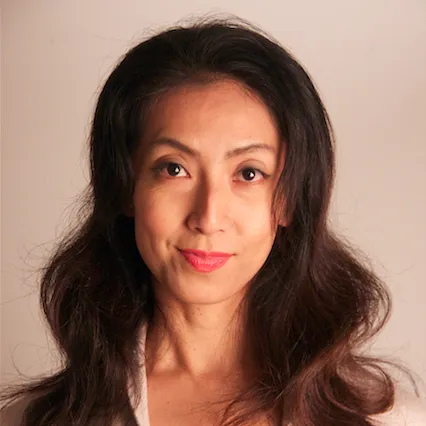
Tomo Sone: The marriage of the emerging technology and human body to be beyond boundaries – inspired by Japanese traditional Noh theatre
Through the pandemic, we remembered how vital is the connection between people. Performing arts expanded its value and possibilities beyond the theater. It is important that the performers on stage will not only become central figures but also feel the world, move forward, and bring about change with the audience. In need of an emerging audience with the rise of the digital age, an increasing number of choreographers and dance artists are exploring new ways to create a different dance experience from traditional production with digital technology. There are physical and mental boundaries between the performer and the audience; in some examples, choreographers have challenged these boundaries in contemporary dance history. Ohad Naharin, for example, repeatedly attempts to disrupt the 'picture frame' of the stage, the frame that divides the audience and the performer by breaking the fourth wall in pieces like “Anaphaza” (1993), “Mamootot” (2003), and “Kamuyot” (2003). The so-called “dancing with the audience” section from 'Deca-Dance' has been performed worldwide and is now one of the most popular parts of his choreographies. In this section, dancers generously invite the audience onto the stage to dance with them. The end of this section is ironic - dancers and audience members leave one by one, while the 'soloist,' the last audience member, stands alone in the middle of the stage. Nevertheless, it offers audiences a less formal and different perspective to dance. From the performer's side, this means that their performance should be different from the traditional way to do with the fourth wall. Ohad's words, “Dancing is about listening, not about telling,” describes everything. Bringing digital technology to concert dance can break the fourth wall and reach an emerging audience, but there is always tension between innovational technology and physical performance. Digital technology and physical performance can be placed on opposite sides, and the process of creation and aims of digital content and physical performance are different. Therefore, the author chose augmented reality (AR) to experience, as a performer, a new way to engage with the audience. It was here aiming to understand the meaning of bringing digital technology to the technology of the body and demonstrate the process of creating a live performance where the audience used AR to extend their imagination. Like any art, dance is the product of human social behavior and a romantic behavior of human thoughts and emotions in the virtual world. The interest in using AR is motivated by a need to engage the emerging audience who wants to engage in the art differently. Some potential audiences can be away from dance because of its traditional setting and procedure, and emerging audiences are interested in participating and engaging in dance and performing interactively. This paper examines the meaning of adding digital technology to the technology of the body and how AR can reach more audiences for dance through case studies. Moreover, and most importantly, it examines how AR can be helpful to make live performances beyond boundaries between performer and audience.
20 min
Tomo Sone
Tomo Sone (JP) is an independent choreographer, performer born in Kyoto. She started her career as a choreographer in Israel in 2008. In 2010, Tomo established Japan-Israel International Dance Project with Israeli choreographers and dancers, and the project has been producing performances and movement workshops. Nowadays, she is expanding her activity internationally while performing, creating […]
https://tomoguest.wixsite.com/dance%20
The Haptic Body In Action – Discussion
Birgitta Hosea will discuss with the participants of Panel I.
10 min
Birgitta Hosea
Birgitta Hosea (SE/UK) is an artist, filmmaker, and researcher in expanded animation. Exhibitions include Venice & Karachi Biennales; Oaxaca & Chengdu Museums of Contemporary Art; InspiralLondon; Hanmi Gallery, Seoul. She has a solo exhibition at ASIFAKeil, Vienna in April 2020. Included in the Tate Britain and Centre d’Arte Contemporain, Paris, archives, she has been awarded […]
http://www.birgittahosea.co.uk/Deep Space 8k – Delivery Dancer’s Sphere (Golden Nica Winner for New Animation Art 2023)
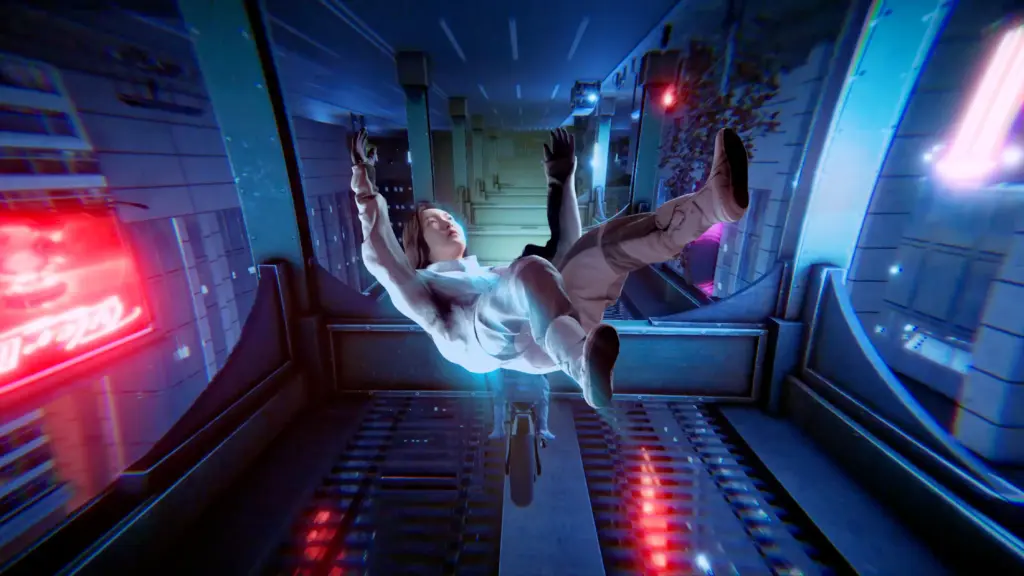 The algorithm-centric, hypervigilant economy of platform labour urges delivery drivers to defy space and time to meet the demands of fastest deliveries. Ernst Mo rushes with the speed of light through a labyrinth of endlessly shifting paths in techno-futuristic Seoul. An unexpected encounter with a double self cracks her reality, and she slides to another dimension beyond algorithmic computability. A dazzling, eerie journey begins, in which various spaces and time-zones collide.
The algorithm-centric, hypervigilant economy of platform labour urges delivery drivers to defy space and time to meet the demands of fastest deliveries. Ernst Mo rushes with the speed of light through a labyrinth of endlessly shifting paths in techno-futuristic Seoul. An unexpected encounter with a double self cracks her reality, and she slides to another dimension beyond algorithmic computability. A dazzling, eerie journey begins, in which various spaces and time-zones collide.
30 min
Ars Electronica Center, Deep Space 8K
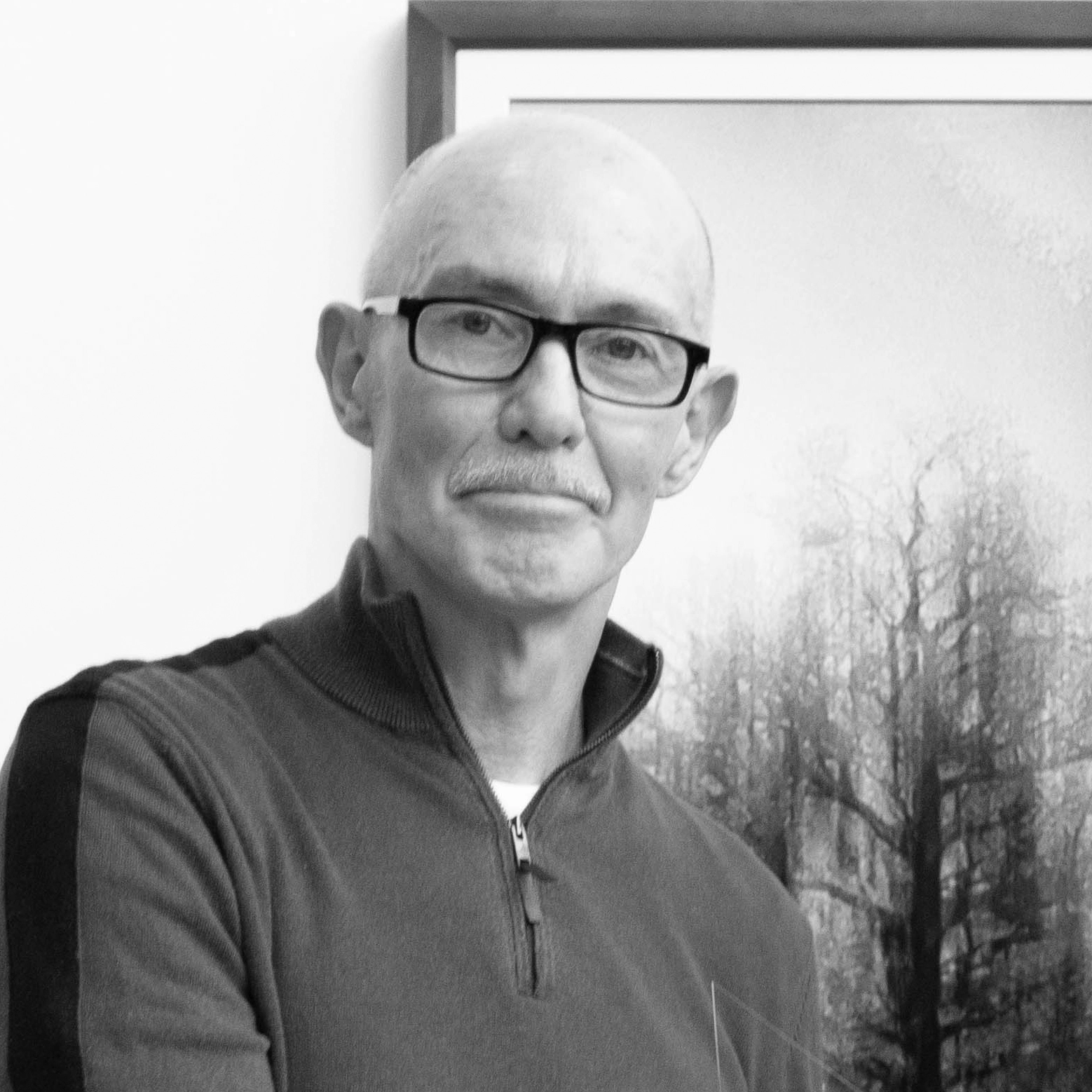

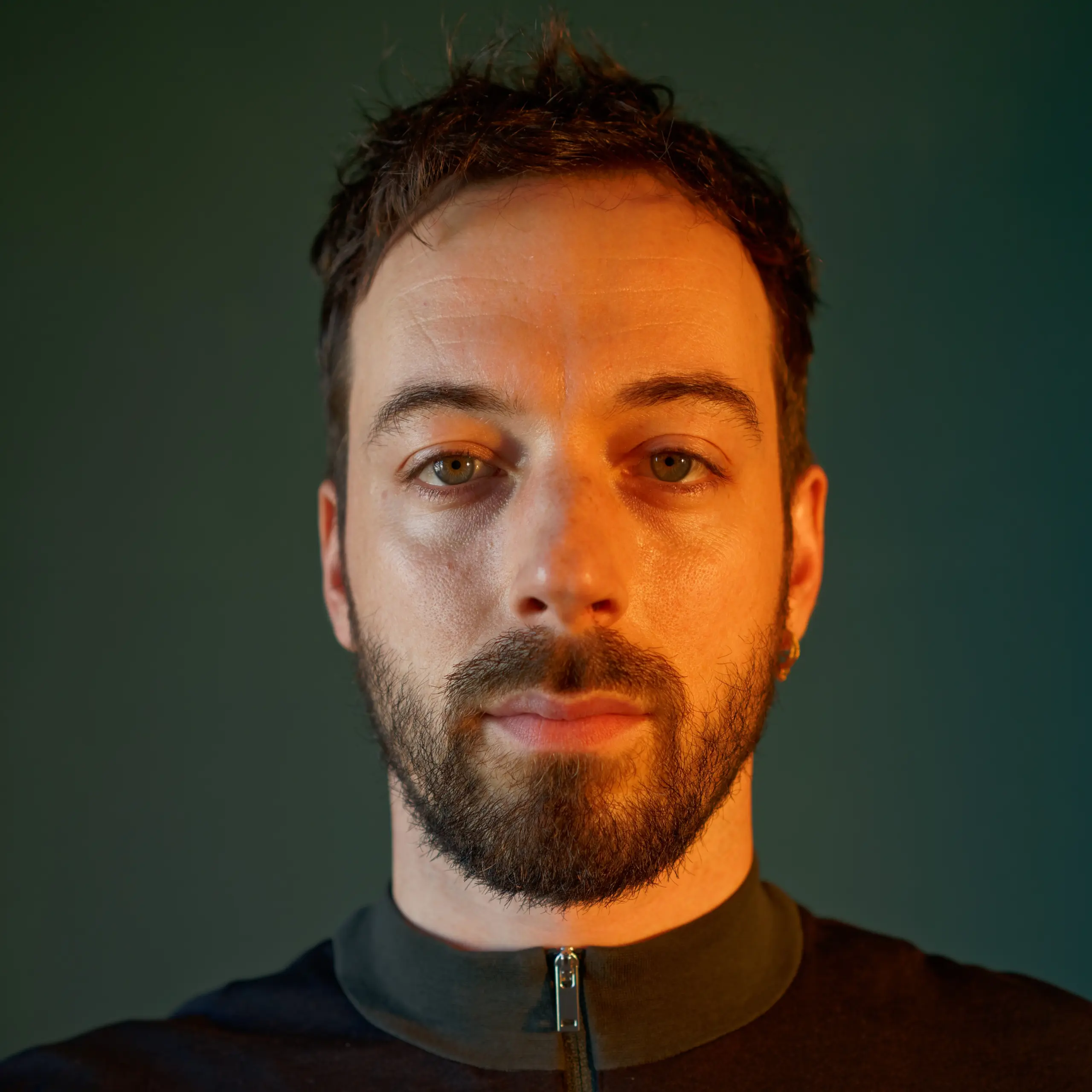
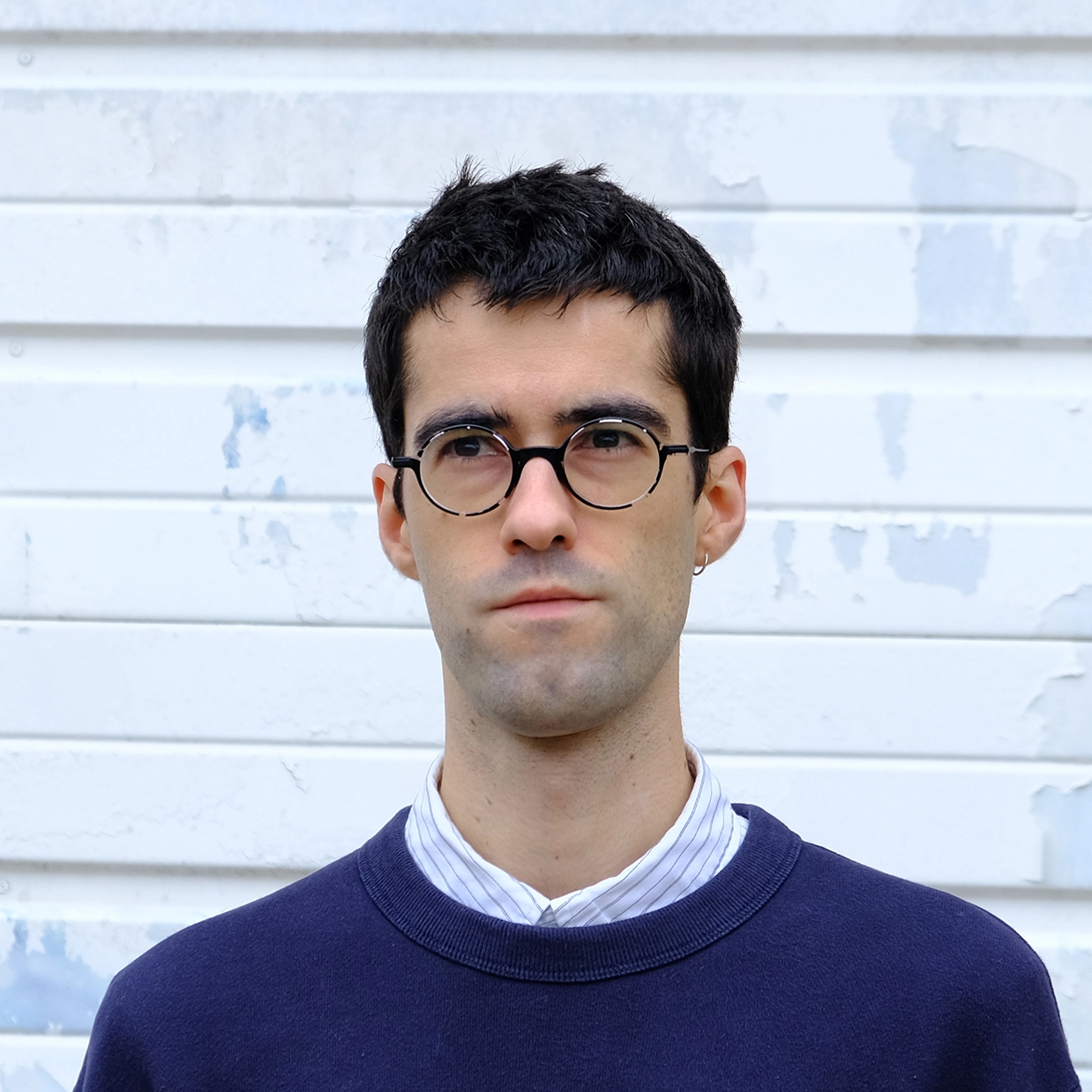

Deep Space 8k – Animation Festival with Data, Bodies Space
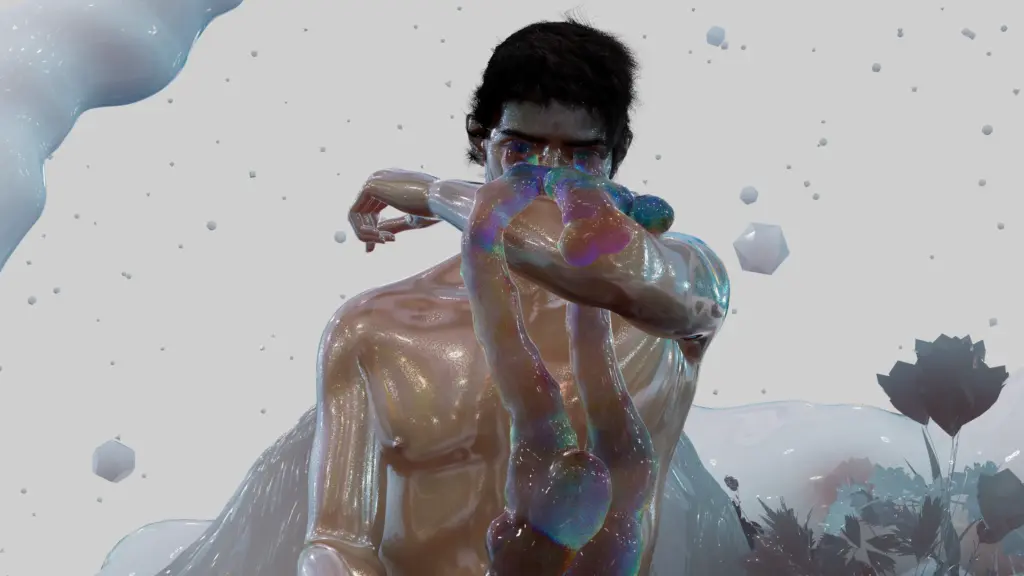 The selected shorts from Data, Bodies, Space fast-forward to a future which is fascinating and frightening at the same time. In The Needlecast Rhapsody, we witness a technology which can upload humans to distant locations in the galaxy. Moirai - Thread of Life also shows a journey to different cosmic dimensions and touches on quantum physics to explain notions of fate. Posthuman Hospital and My Mind As/Is Your Memory, My Body As/Is Your Substance take one to a nightmarish posthuman dystopia, whereas Rehousing Technosphere gives a more hopeful look into a new planetary ecology in a more-than-human future in which the digital is everpresent yet endued with haptic and sensual properties. La Limite est une facade, and IT’S DANGEROUS TO GO ALONE! TAKE THIS! depict mesmerizing journeys of fluidity and metamorphosis with a poetic approach, whereas CIRCVS MAXIMVS and Interchange feature a humorous take on virtual, computer-animated worlds and their relationship with the “real” world, highlighting the entanglements of power and control.
The selected shorts from Data, Bodies, Space fast-forward to a future which is fascinating and frightening at the same time. In The Needlecast Rhapsody, we witness a technology which can upload humans to distant locations in the galaxy. Moirai - Thread of Life also shows a journey to different cosmic dimensions and touches on quantum physics to explain notions of fate. Posthuman Hospital and My Mind As/Is Your Memory, My Body As/Is Your Substance take one to a nightmarish posthuman dystopia, whereas Rehousing Technosphere gives a more hopeful look into a new planetary ecology in a more-than-human future in which the digital is everpresent yet endued with haptic and sensual properties. La Limite est une facade, and IT’S DANGEROUS TO GO ALONE! TAKE THIS! depict mesmerizing journeys of fluidity and metamorphosis with a poetic approach, whereas CIRCVS MAXIMVS and Interchange feature a humorous take on virtual, computer-animated worlds and their relationship with the “real” world, highlighting the entanglements of power and control.
30 min
Ars Electronica Center, Deep Space 8K
Jonathan Armour
Jonathan Armour’s (IE) practice builds from a previous career in engineering and is an interplay between digital and oil-based works, including mappings of non-normative bodies, and digital investigations of the human body as a celebrated, objectified, abstracted form. Often the work is driven by a desire to get under the skin, to pare away the […]
https://thearmourstudio.com/Wang & Söderström
Wang & Söderström (SE) is a Swedish-born, Copenhagen-based artist and design duo consisting of Anny Wang and Tim Söderström. We are interested in investigating the relationship of digital technologies, materials and living things in the current and future digital and ecological shift. Our synthetic realities translates into sculptures, visual imagery and installations that bring craft, […]
https://wangsoderstrom.com/Dorian Rigal Minuit
Minuit (Dorian Rigal, FR), light and digital artist, was born in 1987 in Montmorency, France. Graduate of the National School of Architecture of Paris Val de Seine (ENSAPVS) in 2011, he explores the nocturnal world. He proposes to inhabit the urban night, symbol of an uninhibited freedom, in opposition to the constraining social codes of […]
https://www.minuitdigital.com/Maxime Chudeau
Maxime Chudeau (FR/US) is an independent French filmmaker based in Chicago. As a scenography MFA graduate from Haute École des Arts du Rhin (Strasbourg, FR), Maxime’s hybrid approach to film combines scenic design, sound design and computer animation. His work explores the boundaries of perception and often puts the viewer in the leading role of […]
https://maximechudeau.com/Bassam Issa
Bassam Issa (IE) works across digital animation, painting, sculpture, and textiles creating visions of resistance, transformation, and queer possibility. He completed a BA in Visual Art Practice from Dún Laoghaire Institute of Art, Design and Technology in 2016. His work is part of collections in IMMA, the Arts Council, and Dun Laoghaire Rathdown County Council. […]
https://bassamissa.xyz/
Panel II – Agency in Performance
Panel II consists of three presentations and a follow-up discussion.
1h 10m
Juergen Hagler
Juergen Hagler (AT) studied art education, experimental visual design, and cultural studies at the University for Art and Design in Linz, Austria. He currently works as a professor of Computer Animation and Animation Studies in the Digital Media department at the Hagenberg Campus of the University of Applied Sciences Upper Austria. Since 2014 he a […]
https://research.fh-ooe.at/de/staff/215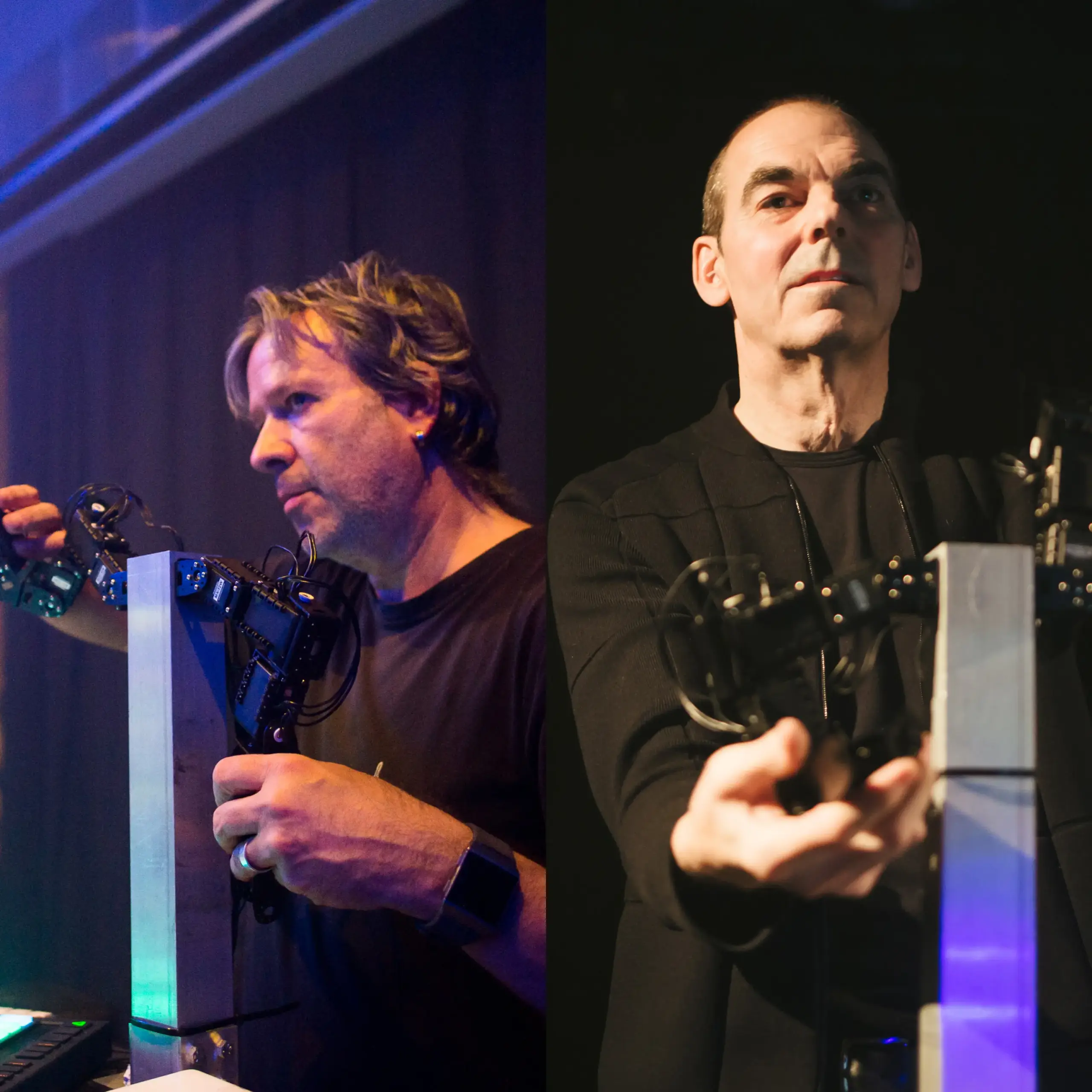
Louis-Philippe Demers & Bill Vorn: Animating Flesh: Procedural Authorship in Participative Robotic Immersive Experiences
This presentation explores the incorporation of mechatronic devices such as exoskeletons and supernumerary limbs into live performances to animate human bodies on stage. We adapt motion capture (mocap) techniques and data gathered from bodies, crowds, and devices to control, augment and alter human movements as if we would be animating 3D virtual characters yet with the inevitable constraints of the physical world and human body integrity. The study acknowledges a shift in the arts towards a more experiential approach. To be actively involved in the work, beyond merely occupying the physical and temporal space, fundamentally changes the perception of action and point of view. “Procedural authorship” refers to participation where instructions are given to audiences by artists [1], similar to the mechanics, dynamics, and aesthetics in game design. This research investigates how procedural authorship can be facilitated and expanded by mocap systems and wearables. Mocap, presented as a spectacle to audiences, highlights the ambiguities of the bodies involved, such as intersubjectivity and de-individuation [2]. The notion of free will is critically engaged, with scenarios either impeding or enhancing future actions, fostering collective responsibility within the performance. The flow of motion data navigates various routes: from bespoke input devices extending to the crowd, from chosen audience members to the entire gathering, through one-to-one "dialogues" facilitated via mobile applications, to a self-capturing and replay system of motion. This transforms audiences into interactive feedback systems and positions mocap as an instrument for crowdsourcing activities and collaborative creativity. Several productions have seamlessly integrated human and machine, transforming animated bodies into amalgamations of light, robot, sound, and group elements. "Grace State Machines" (Vorn, 2007) aligns human bodies with abstract machine forms. "Inferno" (Demers, Vorn, 2015) equips 24 novices with exoskeletons, transforming them into dancers, where live mocap facilitates better dynamics. "XLimbs" (Demers, 2017) employs wearables that self-record and replay movements through extra limbs. The upcoming "Godspeed" (2024) will empower spectators to become skilled performers within a larger ensemble, utilizing feedback mocap and subsequently quantizing each member's movements. There are affordance motives to be found in interoperable motor skills between participants, in kinesthetics resonances, and also in impossibilities [3]. Given this procedural authorship, participants’ brains expect certain prototypical features once the pattern of body data harvesting is suggested or given. Participative works aim to create a liminoid framework akin to a stage space. The heightened intersubjectivity is set forth by an invitation to join, followed by consent to participate. Audiences are literally “raptured” [4] by the wearables. This enhances immersion and triggers strong physiological responses marking transformative moments in the lives of participants.
- White, G., Audience participation in theatre: Aesthetics of the invitation. 2013: Springer.
- Mueller, F.F., et al., Towards Understanding the Design of Intertwined Human-computer Integrations. ACM Transactions on Asian and Low-Resource Language Information Processing, 2023.
- Garner Jr, S.B., J. Garner, and Rene, Kinesthetic Spectatorship in the Theatre. 2018: Springer.
- Levy, E.K., Enraptured: Attention and Art, in Perception and Agency in Shared Spaces of Contemporary Art. 2017, Routledge. p. 171-183.
20 min
Louis-Philippe Demers & Bill Vorn
Bill Vorn and Louis-Philippe Demers are prominent figures in the field of Robotic Art for the past 30 years. Their projects incorporate robotics, motion control, sound, lighting, video, and cybernetic processes. Their artistic exploration is strongly influenced by advancements in Human-Robot Interaction, with a focus on Relational Robotics and Audience Experiences. Vorn is a Full […]
https://vimeo.com/lpdemers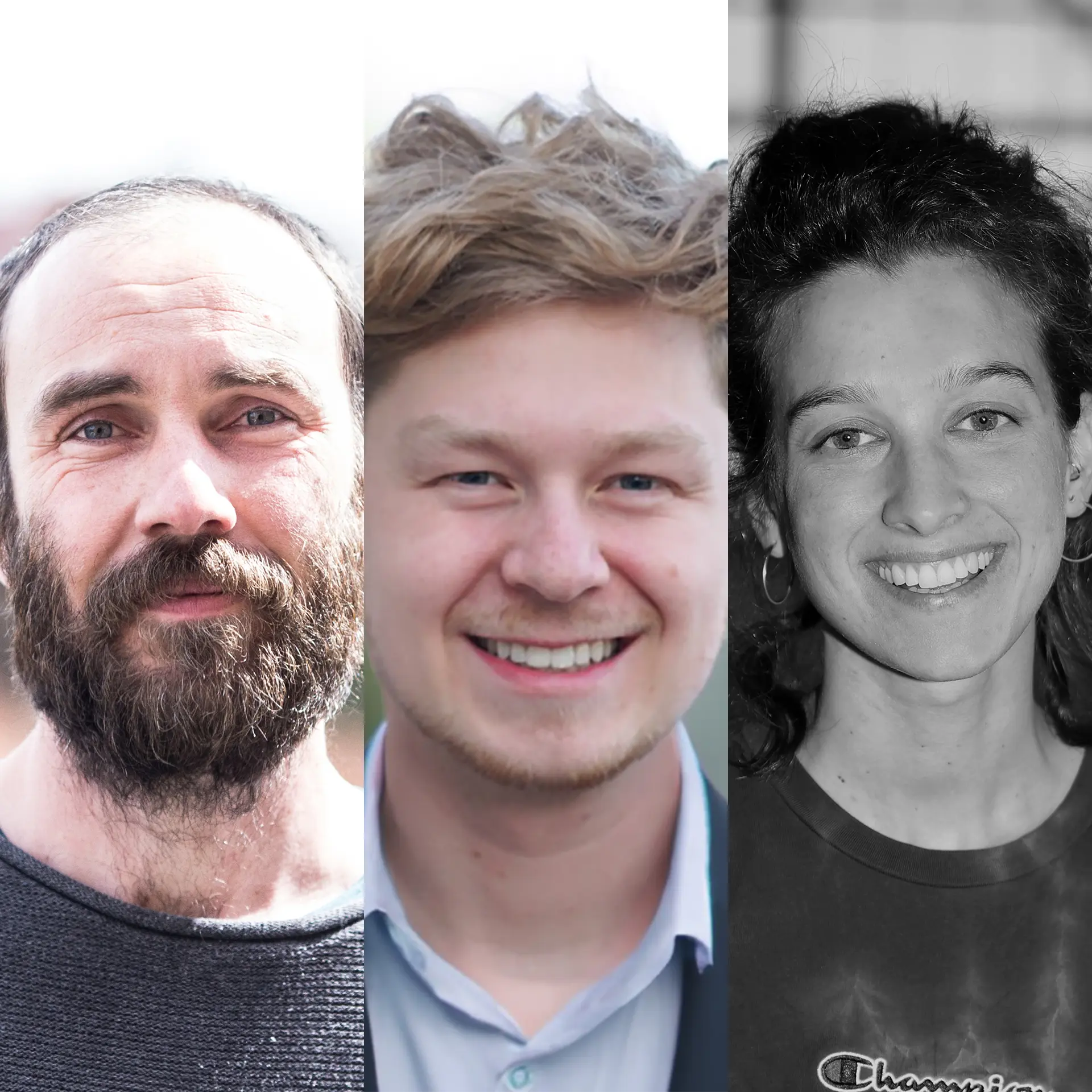
Friedrich Kirschner, Julian Salhofer & Leoni Voegelin: Animating a Concept – employing stop-motion and puppetry lenses for more-than-human experiences
The definition of puppetry in a traditional theatre or performance context implies the human manipulation of inanimate anthropomorphic objects such as puppets, dolls, marionettes, and figurines. This can be broken down into three elements – the inanimate figure, the movement imposed on it, and the vocal performance (Veltruský, 1983: 68-122 and Wagner, 2003: 47-48). In contrast to analog animation techniques, where inanimate objects are “brought to life” by frame-by-frame animation (Furniss 1998), a puppeteer performs in front of a live audience. According to (Tillis 1992:65), the audience also plays a crucial role because they must “suspend their disbelief and bring life to the object so that it becomes a puppet.” (Calvillo-Gámez and Cairns, 2008: 314). Although the live character must be suspended, this kind of “double vision” is also valid for an audience of animation films. The proposed talk illustrates how these concepts can be combined and subverted to devise contemporary speculative fiction experiences. It revolves around the outcomes of the second iteration of the art-based research project VRinMotion – ExperiMotion 2 that applied and extended both techniques in an experimental virtual setup while also working with the proposed constraints as a guideline for narrative design to experience planetary scale concepts and more-than-human-actors, such as tectonic plates and labor. To achieve this, the experimental setup combined interactive, sensory experiences from contemporary puppetry with imaging methods from stop motion and timelapse photography. Arduino circuits were built to continuously stimulate inorganic matter, like using sand and vibration motors or colored fluids and micro fog machines in saltwater to create generative puppeteered stop-motion sequences that betray their actual scale. This forms the basis for a VR environment of an underground facility with a worker telling the participants about his day-to-day activity of cutting “frames” out of tectonic plates. Methods to create segmented phonetics of movements were developed for the flexible animation of this person. Integrating Kinect depth image technology allows the mapping of pixilated human motion onto a virtual character. For VRinMotion, puppetry is an abstract systemic process where not movements but impulses go into social contexts, media contexts, or technical contexts and then lead to different consequences (Kirschner, 2023). Furthermore, according to Calvillo-Gámez and Paul Cairns (2018: 314), in video games, the player assumes the roles of the audience and a puppeteer with controllers, while the videogame itself assumes the role of the puppet. This also applies to the virtual environments of VRinMotion, because the interactive aspect between real and virtual worlds massively increases the range of immediate expressivity. The project developed new possibilities for interactive impulses such as eye-blinking, breathing, or sand-grabbing to influence and navigate the VR experience. The performative situation also resembles an immersive theatre in which ad-hoc reactions between the puppeteer/user and its environment are possible and must accommodate the storytelling. Further details about the project VRinMotion: https://research.fhstp.ac.at/en/projects/vrinmotion/experimotion-2
20 min
Friedrich Kirschner, Julian Salhofer & Leoni Voegelin
Friedrich Kirschner (DE) is a theatre director and software developer. He uses game structures and technology for participatory performances and interactive installations. Friedrich is head of the MA Spiel und Objekt as a Professor for digital media at the University of Performing Arts Ernst Busch in Berlin. Julian Salhofer (AT) is a junior researcher at […]
https://leonivoegelin.com/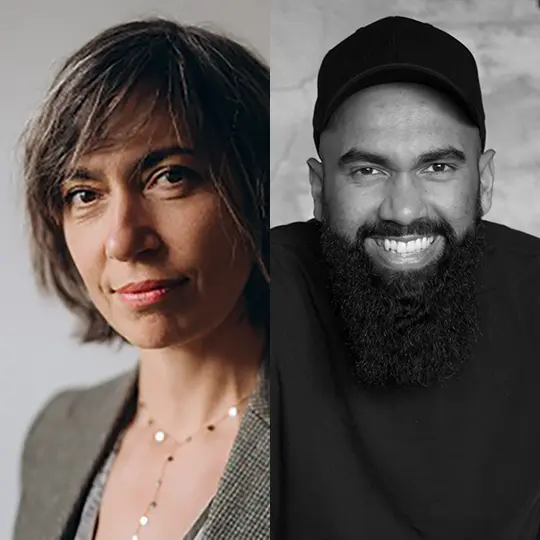
Lana Tankosa Nikolic & Rameshnath Krishnasamy: Motion Capture in the Metaverse – Embodied co-present Hybrid Theater – CANCELED
This talk has been canceled and will not be presented at Synaesthetic Syntax. We present the ‘Metastage’—a hybrid stage composed of a physical performance space, mediated and augmented through Metaverse-enabling technologies such as motion capture, virtual reality, and virtual production. We adopt a broad definition of ‘The Metaverse’ as an emerging concept, encompassing not only 100% virtual worlds but also virtual, augmented, and mixed reality. As such, we examine the Metaverse as various interconnected digital platforms (Ritterbusch & Teichmann 2023) enabling new forms of human connections and real-time performative potentials across multiple devices and platforms (Proulx et al 2022; Park & Kim, 2022). The Metastage is a conceptual platform designed for hybrid theatrical performances, which involve actors wearing motion-capture suits, performing in front of live audiences who experience the performance through both physical and virtual reality elements while also being live-streamed to virtual reality audiences at other locations. The audience is able to participate in the performance through game-like interactions at crucial points, affecting various parts of the performance. Thus, the Metastage constitutes a mix of live non-digital performance, augmented virtual reality motion-capture performances, and distributed virtual reality to remote audiences—affected by the audience's interactions throughout. The case for the Meta-stage is the experimental theater platform, White Hole Theater, and the three Danish digital hybrid performances: ‘Valdemars Story’, ‘The Battle #1’, and ‘The Battle #2’. We present how the Metastage has been utilized in the three cultural heritage-inspired theater performances in 2021–2023, where historical dramatic events from Denmark in 1146 are mixed into modern-day life through the hybrid performance (White Hole Theater, 2023). We position this among current contemporary state of art in exploring immersive mediums as part of live performance arts (Montagud et al., 2020; Iudova-Romanov, 2023) and the role of virtuality in theatrical performances as a whole (Popat, 2016). The performative arts have long been trailblazers in combining digital technologies with live performances (Dixon, 2014; Jernigan et al., 2014; PluginHUMAN, Delbridge & Timpkins, 2012), and recent examples show how audience participation and performative interactions can be part of live theater performance. The project's central challenge has been to create engaging shared experiences for both live and remote audiences while balancing the physical presence of the actors and their motion capture and animated counterparts. This addresses a persistent issue of virtuality in performance arts - the question of choreography becoming intertwined with animation (e.g., Calvert & Mah, 1996) and whether the embodied experience of theater is affected by the ‘noise’ of immersive interfaces (Krivospitskaya, 2011; Smith, 2019; Popat, 2016). This is, in turn, to be judged against the augmentation potential of animating the performance space, as well as the inclusive potential of audiences interacting and participating remotely, making culture available beyond the availability of the physical stage itself. From audience research, production post mortems, and plans for further iterations of the Metastage, we discuss these issues and propose that the potential for embodied, co-present hybrid stages stretches beyond theater alone but sets the stage for new ways of utilizing animation and digital media for a broad range of performative live events. References: https://docs.google.com/document/d/1bf_RxBH1SfQaB46veV7621XwQzqoqXu4kZ26hFXZhB0/edit?usp=sharing
20 min
Lana Tankosa Nikolic & Rameshnath Krishnasamy
Lana (DK) is an established producer of award-winning animation and immersive multimedia projects embracing animation, digital arts, VR, theatre, and performance. She is the founder and owner of Late Love Production. She works part-time as a project leader in the Research and Development Department at The Animation Workshop, VIA University College. She is the producer […]
https://www.whiteholetheater.dk/watch
Agency in Performance – Discussion
Juergen Hagler will discuss with the participants of Panel II.
10 min
Juergen Hagler
Juergen Hagler (AT) studied art education, experimental visual design, and cultural studies at the University for Art and Design in Linz, Austria. He currently works as a professor of Computer Animation and Animation Studies in the Digital Media department at the Hagenberg Campus of the University of Applied Sciences Upper Austria. Since 2014 he a […]
https://research.fh-ooe.at/de/staff/21515:10
Break
A short break between the Synaesthetic Syntax sessions.
20 min

Panel III – Liveness and Procedural Animation
Panel III consists of three presentations and a follow-up discussion.
1h 10m
Juergen Hagler
Juergen Hagler (AT) studied art education, experimental visual design, and cultural studies at the University for Art and Design in Linz, Austria. He currently works as a professor of Computer Animation and Animation Studies in the Digital Media department at the Hagenberg Campus of the University of Applied Sciences Upper Austria. Since 2014 he a […]
https://research.fh-ooe.at/de/staff/215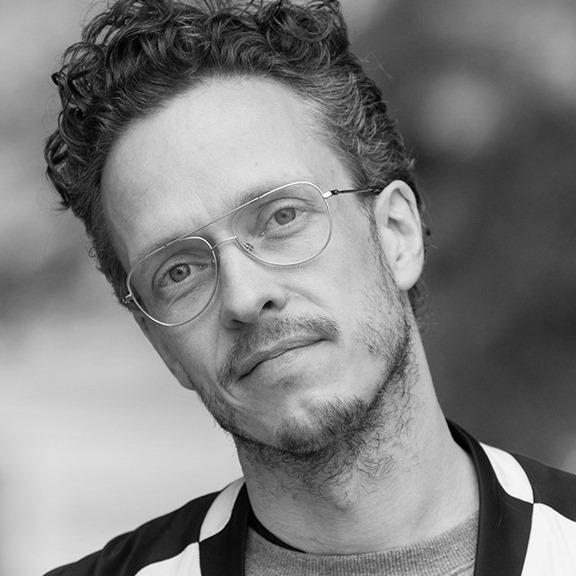
Max Hattler: Hattlerizer 4.D: Expanded Stereoscopic Abstract Animation Live Performance
When I started performing live visuals, I saw it as an enjoyable but slightly throwaway counterpoint to my experimental animation practice. Over the years, the live work has matured into a succinct and coherent audio-visual expression on equal par with the animation films and installation works. It deals with a very similar kind of inquiry, except that it happens in real-time, in a less controlled and much longer-form format. Improvisation within a set of rules, the search for synchresis, and the orchestration of time and movement in a musical expression of visual elements are at the heart of it. My latest audio-visual performance instrument, Hattlerizer 4.D, represents a consolidated real-time motion graphics setup with a precise and specific vocabulary of shapes, sounds, and motions. Inspired in equal parts by improvisational jazz, the scroll paintings of Hans Richter and Viking Eggeling, Norman McLaren’s optical sound experiments, and Laurenz Theinert’s visual piano performances, it provides a self-referential audio-visual system with a range of modifiers which enable real-time, improvised performance of multi-layered and fluid stereoscopic abstract animation and synchronised optical sound. Consisting of custom software components and hardware controllers, the physical input of the performer becomes an important part of the experience. In contrast to my fixed animation works which are meticulously micro-edited, in Hattlerizer performances, live improvisation – with all its flaws and imperfections – is foregrounded and becomes perceivable for the audience. This presentation discusses the influences, development, technical setup, and visual expressions of the Hattlerizer from the first version in 2010 to its latest 4.D iteration to reflect on questions of ‘liveness’ and improvisation in animation and questions of ‘animation’ in audio-visual performance.
20 min
Max Hattler
Max Hattler (DE/HK) is an artist, researcher, curator, and educator who works with abstract and experimental animation, video installation, and audio-visual performance. After studying at Goldsmiths and the Royal College of Art, London, he completed a doctorate in fine art at the University of East London. He is an associate professor at the School of […]
http://www.maxhattler.com/
Johannes DeYoung: The Endless Mile: Phantasmagoria, Shadow Play, and Performative Assembly
“The Endless Mile (Another Line of Becoming)” is an interactive computational artwork that blends live and prepared media through procedural graphics generation, real-time animation, and audio-visual synthesis. Each time its underlying program runs, the artwork generates new aesthetic assemblies from an index of prepared components, including animated elements, images and videos, virtual 3D models, and sounds, as well as live media inputs prompted through performative interaction or audience feedback. While each component initially comprises its own individual statement, the collective assembly yields variable and sometimes overlapping phrases.The aesthetic arrest of audiovisual content sometimes misrepresents computational artworks as cinematic endeavors. Strictly approaching such work from within cinematic discourse misses an important conceptual framework. “The Endless Mile” is built upon a poetic combine structure that’s more akin to Robert Rauschenberg’s “The 1/4 Mile or 2 Furlong Piece” (1981–98) than to fixed cinematic narrative. While presented as an animated video mural, the work’s real-time affordances confound strict linear flow and relinquish authorial control from within the momentary relationships of the scroll. Authorial influence instead resides in the design of the index and the system itself, which perpetually spawn new component combinations throughout its open-ended duration.This presentation considers expansive frontiers for making and experiencing animation at the intersections of art, technology, and live performance. Poetic frameworks in procedural real-time graphics, collective assemblies, and collaborative design situate the historical examples and contemporary works highlighted in this presentation.References include: theatrical storytelling paradigms in Indonesian Wayang Beber and Wayang Kulit traditions; early cinematic actualities, novelty films, and the cinema of attractions; eighteenth and nineteenth-century theatrical immersions, including phantasmagorias, architectural panoramas, and mechanical scrolls; post-media tendencies of Expanded Cinema, the Neo-Avant-Garde, Fluxus, and contemporary art practice; behavioral studies in psychology and UX design; as well as computational ambiance acts, counter-gaming console hacks, and AI-generated cinematic arts practices.Works Cited (abbreviated):
- Broad, Terence, and Mick Grierson. “Autoencoding Blade Runner: Reconstructing films with artificial neural networks.” ACM SIGGRAPH 2017 Art Gallery, 2017.
- Deleuze, Gilles and Félix Guattari. A Thousand Plateaus (English Edition). Minneapolis: University of Minnesota Press, 1987.
- DeYoung, Johannes. The Endless Mile (Another Line of Becoming). Procedurally animated video, custom software, 2022.
- Elcott, Noam M. “The phantasmagoric dispositif: An assembly of bodies and images in real time and space.” Grey Room 62, 2016.
- Gunning, Tom. “ ‘Now You See It, Now You Don’t’: The Temporality of the Cinema of Attractions.” The Velvet Light Trap 32, 1993.
- Kotz, Mary Lynn. Rauschenberg/Art and Life. Third edition. New York: Abrams, 2018.
- Mannoni, Laurent, and Ben Brewster. “The phantasmagoria.” Film History 4, 1996.
- Manovich, Lev. “Post-media aesthetics.” Transmedia Frictions, the Digital, the Arts, and the Humanities, 416. 2001.
- Neyman, Chauncey J. “A survey of addictive software design.” 2017.
- Schwingeler, Stephan. “Radical Action and Pure Joy: David OReilly’s Video Game Everything in the Context of Game Art, Art History, and a new Gamic Avant-garde.” 2019.
- Wansink, Brian, James E. Painter, and Jill North. “Bottomless bowls: why visual cues of portion size may influence intake.” Obesity research 13.1, 2005.
- Youngblood, Gene. Expanded Cinema: Introd. by R. Buckminster Fuller, 1970.
20 min
Johannes DeYoung
Johannes DeYoung (US) is an internationally recognized artist and filmmaker who works at the intersection of computational and material processes. His moving-image works have been exhibited internationally at venues such as: Museo de Arte Contemporáneo de Alicante, Alicante, Spain; Festival ECRÃ, Rio de Janeiro, Brazil; National Taiwan Museum of Fine Arts, Taichung, Taiwan; B3 Biennale […]
https://www.johannesdeyoung.com/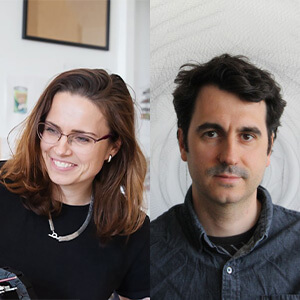
Varvara Guljajeva & Mar Canet Sola: Exploring the Catastrophic Impact of Human Interaction on Nature: Navigating the Latent Space of Diffusion Models through the Gaze
Large AI models, such as Stable Diffusion, have compressed billions of nature images that bear traces of both the catastrophic impact of human interaction and the mesmerizing beauty of natural landscapes, seamlessly merging these contrasting aspects. The past history of humanity, available online, is stored in datasets like LAION-5B, which aggregated 5 billion images from the internet for training such large models like Stable Diffusion. The weights of the checkpoint file are the repository where all this knowledge remains compressed and stored. Artwork “Visions of Destruction” introduces an innovative real-time AI-driven interactive latent cinema experience to its audience. By harnessing the power of gaze and leveraging prompts that depict various ecological damages caused by humans, this groundbreaking project creates initial beautiful landscapes which mesmerize the flow of animated transformations to landscapes of ecological disasters. Guided by the viewers' gazes, which are seamlessly detected through an advanced eye-tracking system, the real-time animations unfold, offering a captivating exploration of the consequences of our actions on the environment. In other words, a simple act of observation results in transformation of imagery. The piece unveils the possibility space of a generative model when is fearlessly exploring the digitalized history of human transformations to nature captured in the training images. In the latent cinema of AI, dreams and nightmares intertwine as the generative model unravels hidden dimensions and unleashes new possibilities creating visual indeterminacy landscapes [1] of catastrophes to nature. It opens up a realm of limitless creativity and imagination, creating a unique experience for each viewer. It becomes a powerful tool, providing artists and filmmakers with a canvas to transmute their visions into tangible reality, blurring the line between the creator and the created. Moreover, gaze is a mode of interaction in this system, taking salient parts looked at by the viewers, but also the metaphor of humanity’s gaze over nature and its impact. In terms of its technological aspects, this art installation demonstrates recent advancements in text-to-image models. Moreover, the interactive art piece uses real-time deep learning technology for image generation and animations, skillfully combined with an innovative method of interaction through eye-tracking. To achieve this, we make use of Stable Diffusion Inpainting model by using masks created of the specific areas where the viewer looks in the image. These masks enable the transformation of the image on the viewer's focal points, guided by prompts that poignantly address the theme of human-induced destruction of nature and create interpolations to the new images generated. Finally, when a landscape has been destroyed by the gaze interaction, and it is not looked at for a few seconds, it regenerates into a new ‘beautiful landscape’. To sum put, the proposed presentation is about a case study that introduces real-time gaze-based navigation to AI-generated animation depicting human destructive events in the beautiful landscapes, which are actually synthetically generated, too. References [1] Hertzmann, Aaron. "Visual indeterminacy in GAN art." In ACM SIGGRAPH 2020 Art Gallery, pp. 424–428. 2020.
20 min

Liveness and Procedural Animation – Discussion
Juergen Hagler will discuss with the participants of Panel III.
10 min
Juergen Hagler
Juergen Hagler (AT) studied art education, experimental visual design, and cultural studies at the University for Art and Design in Linz, Austria. He currently works as a professor of Computer Animation and Animation Studies in the Digital Media department at the Hagenberg Campus of the University of Applied Sciences Upper Austria. Since 2014 he a […]
https://research.fh-ooe.at/de/staff/21516:40
Break
A short break between the Synaesthetic Syntax sessions.
20 min
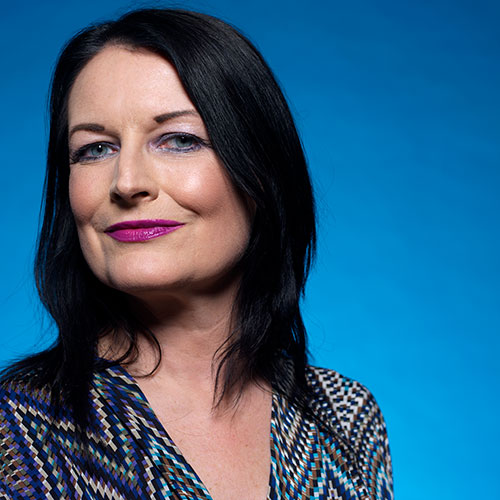
Ghislaine Boddington
Ghislaine Boddington (UK) is a curator, presenter and researcher, known for her pioneering work placing the body as the interface for digital technologies and exploring telepresence, digital intimacy and virtual physical blending since the early 1990s. Her research led practise, expert direction and curations include “Robots and Avatars” (EU/Nesta 2009–11), “me and my shadow” (National […]
https://ghislaineboddington.com/
Synaesthetic Syntax – Closing Note
Birgitta Hosea (SE/UK) concludes this year's Synaesthetic Syntax and Expanded Animation in a short closing note.
10 min
Birgitta Hosea
Birgitta Hosea (SE/UK) is an artist, filmmaker, and researcher in expanded animation. Exhibitions include Venice & Karachi Biennales; Oaxaca & Chengdu Museums of Contemporary Art; InspiralLondon; Hanmi Gallery, Seoul. She has a solo exhibition at ASIFAKeil, Vienna in April 2020. Included in the Tate Britain and Centre d’Arte Contemporain, Paris, archives, she has been awarded […]
http://www.birgittahosea.co.uk/